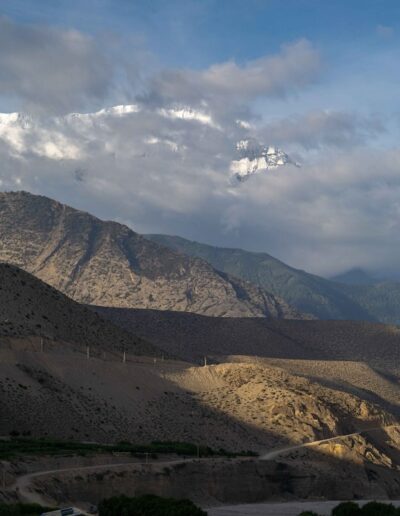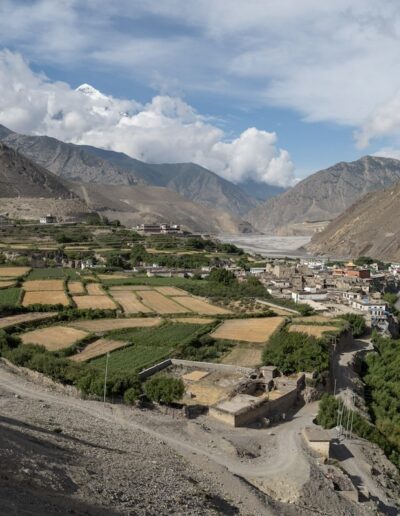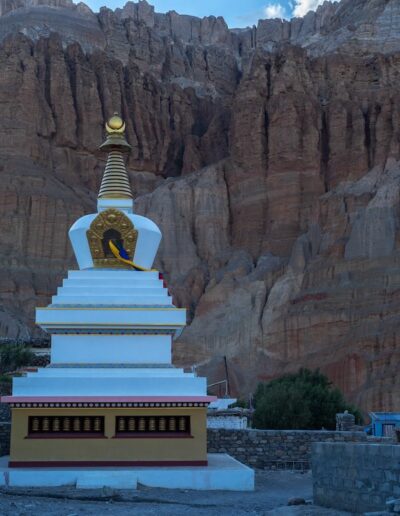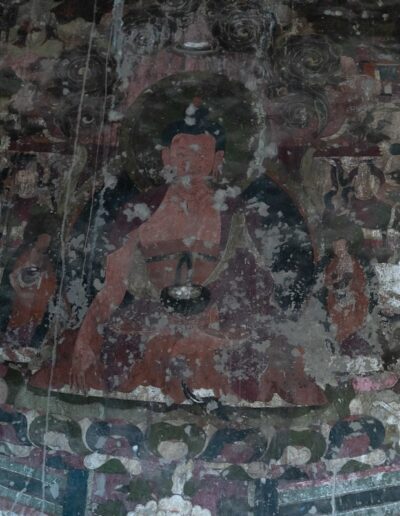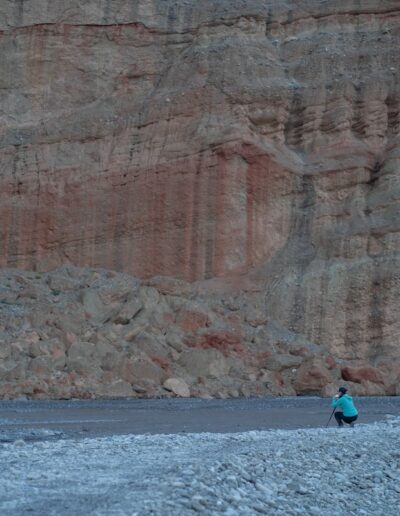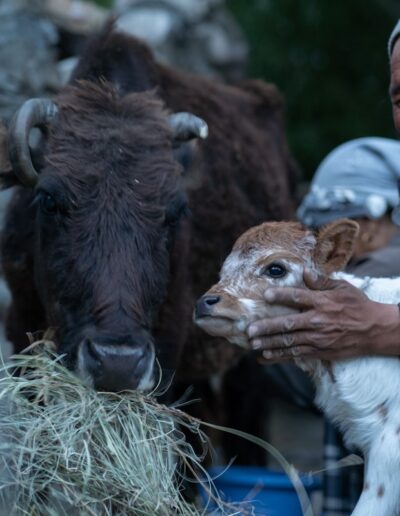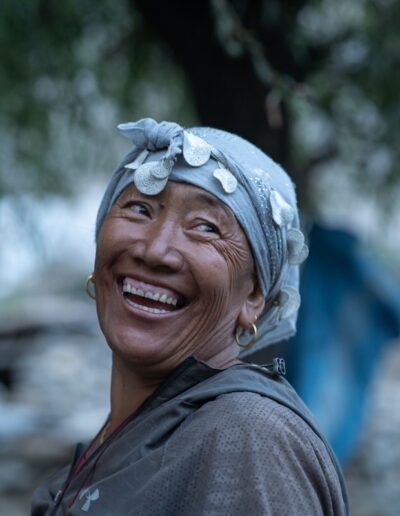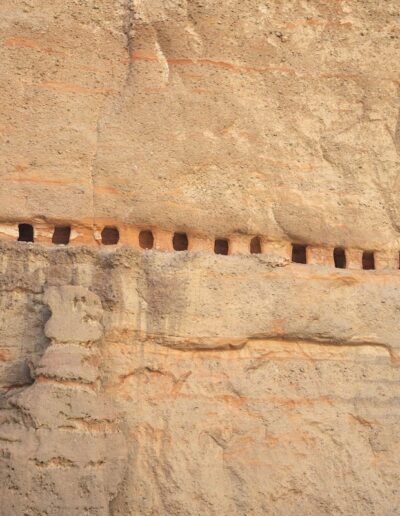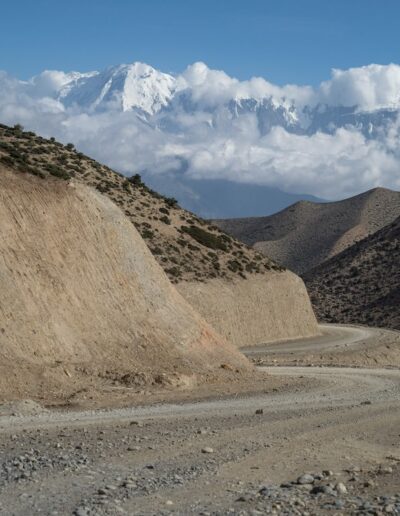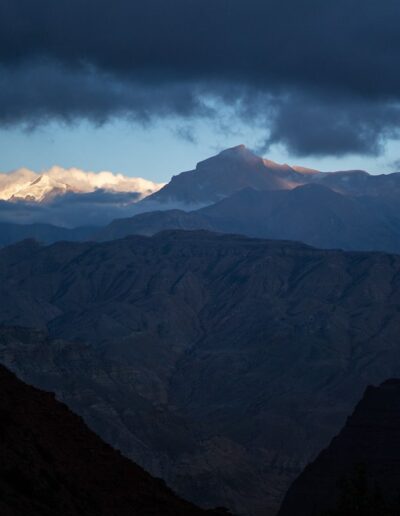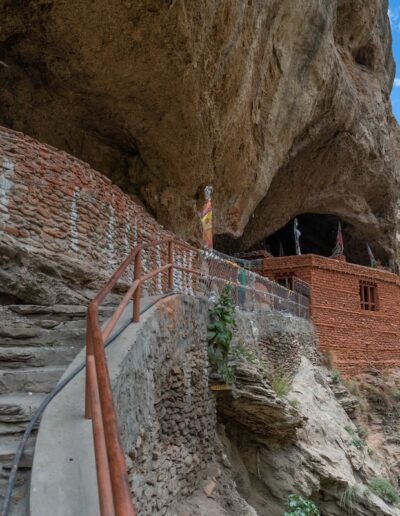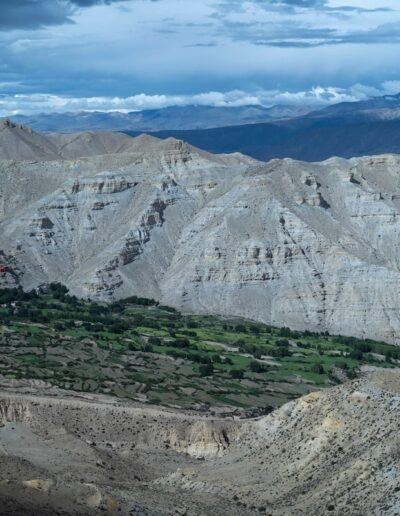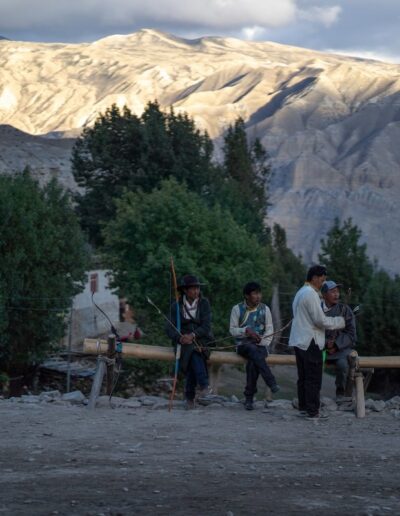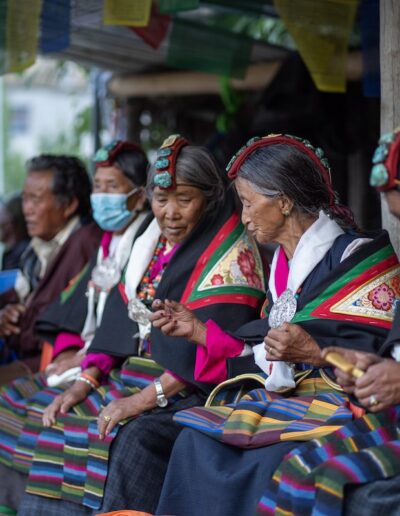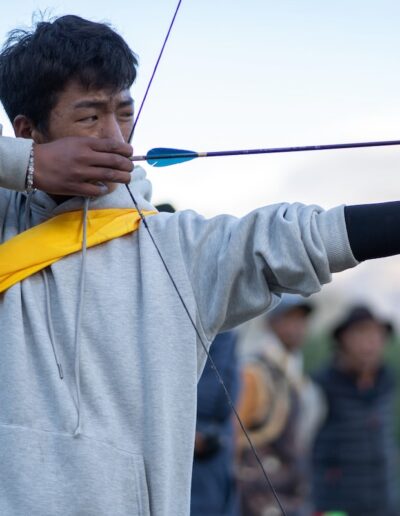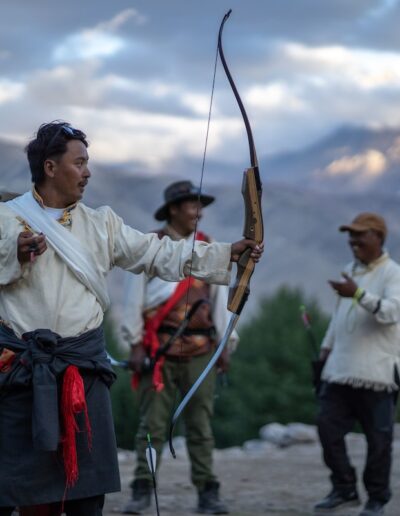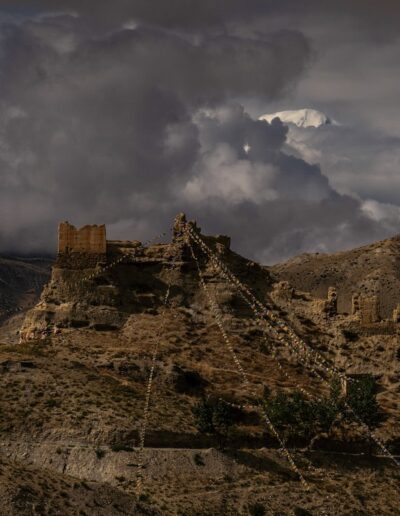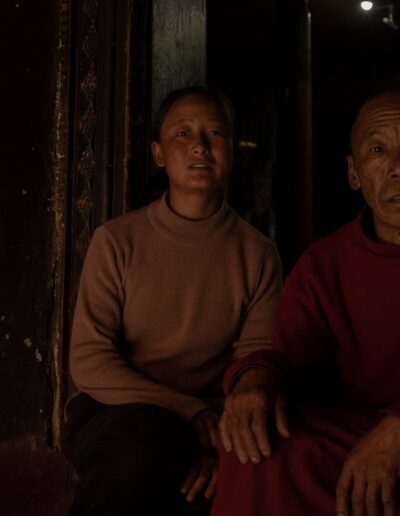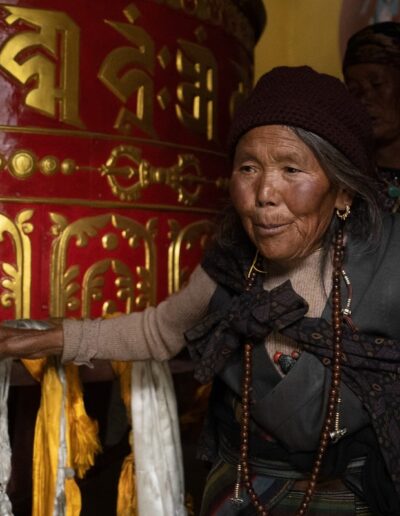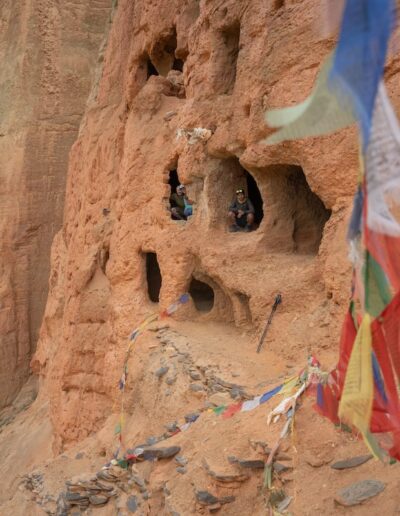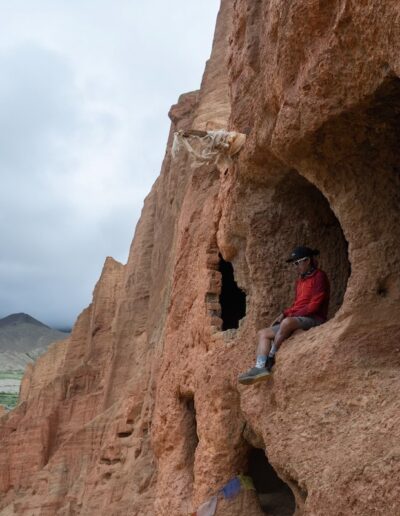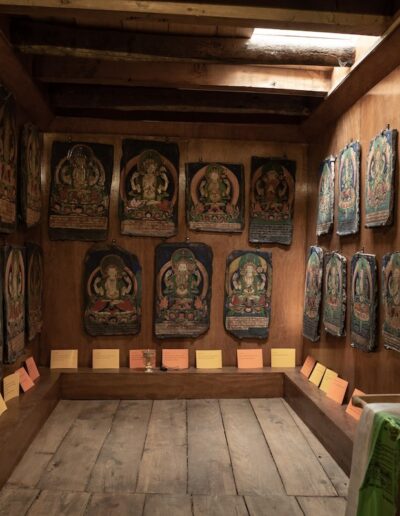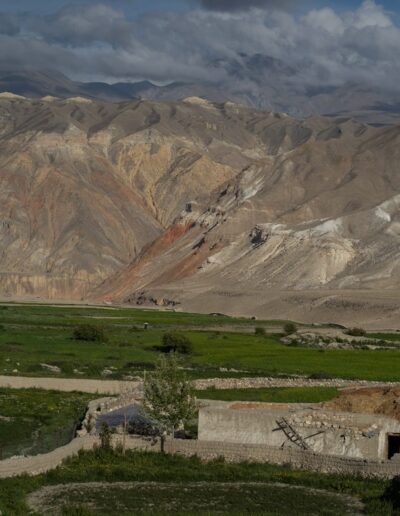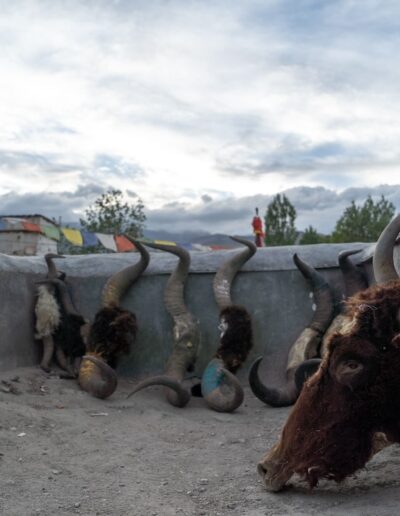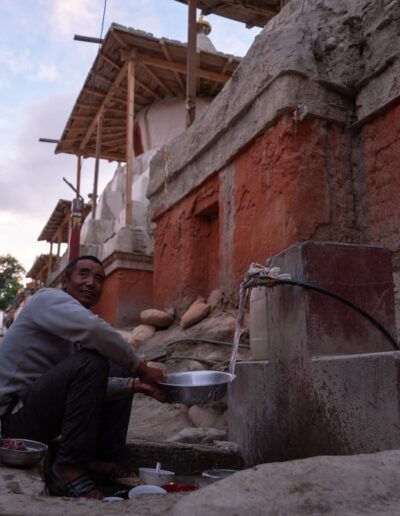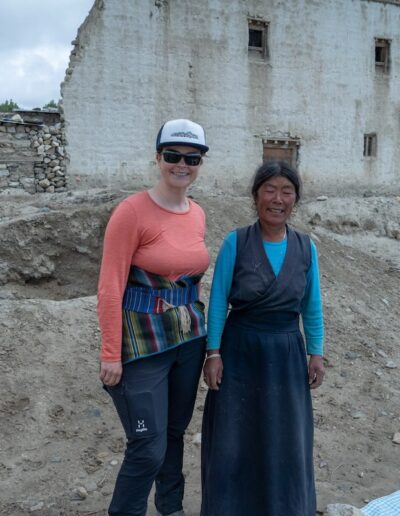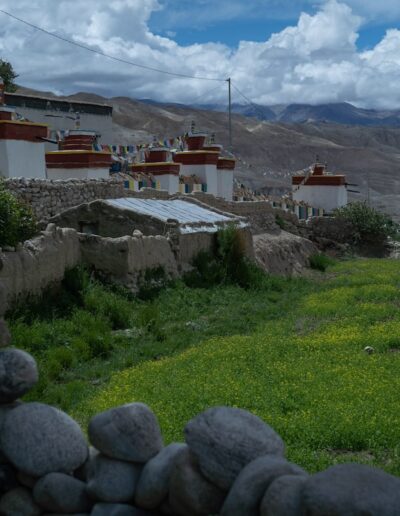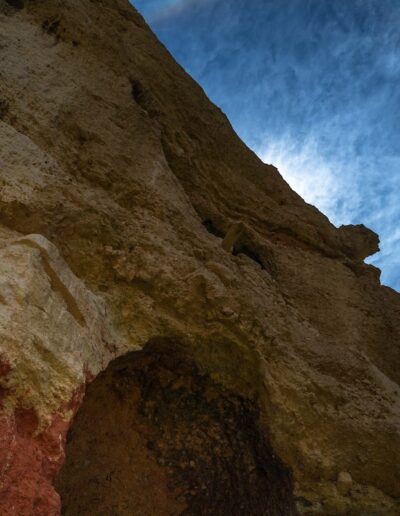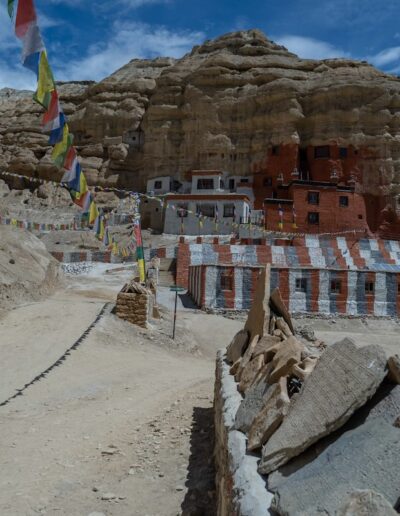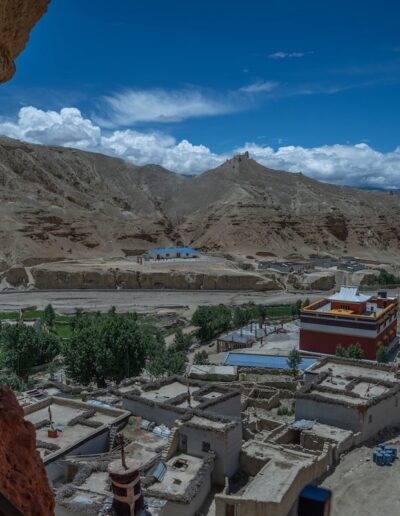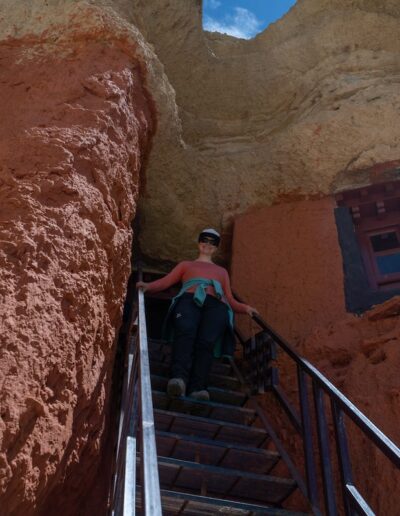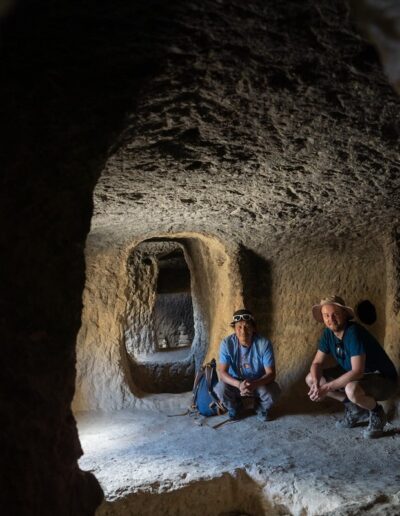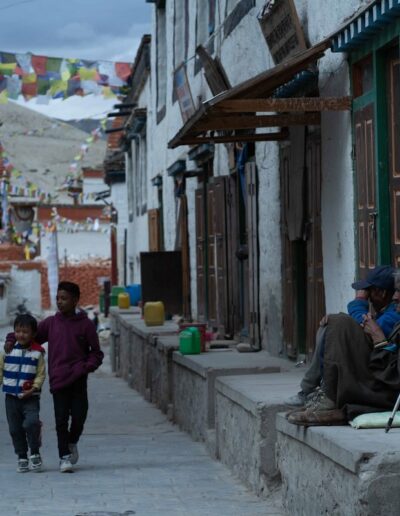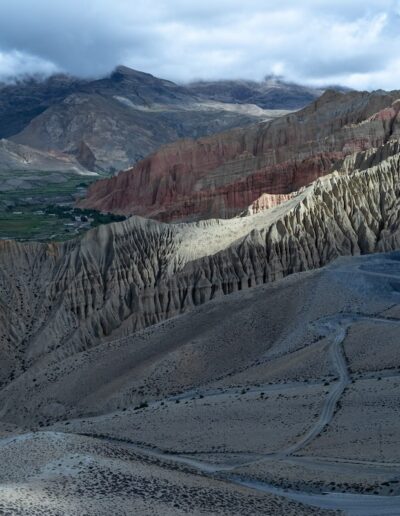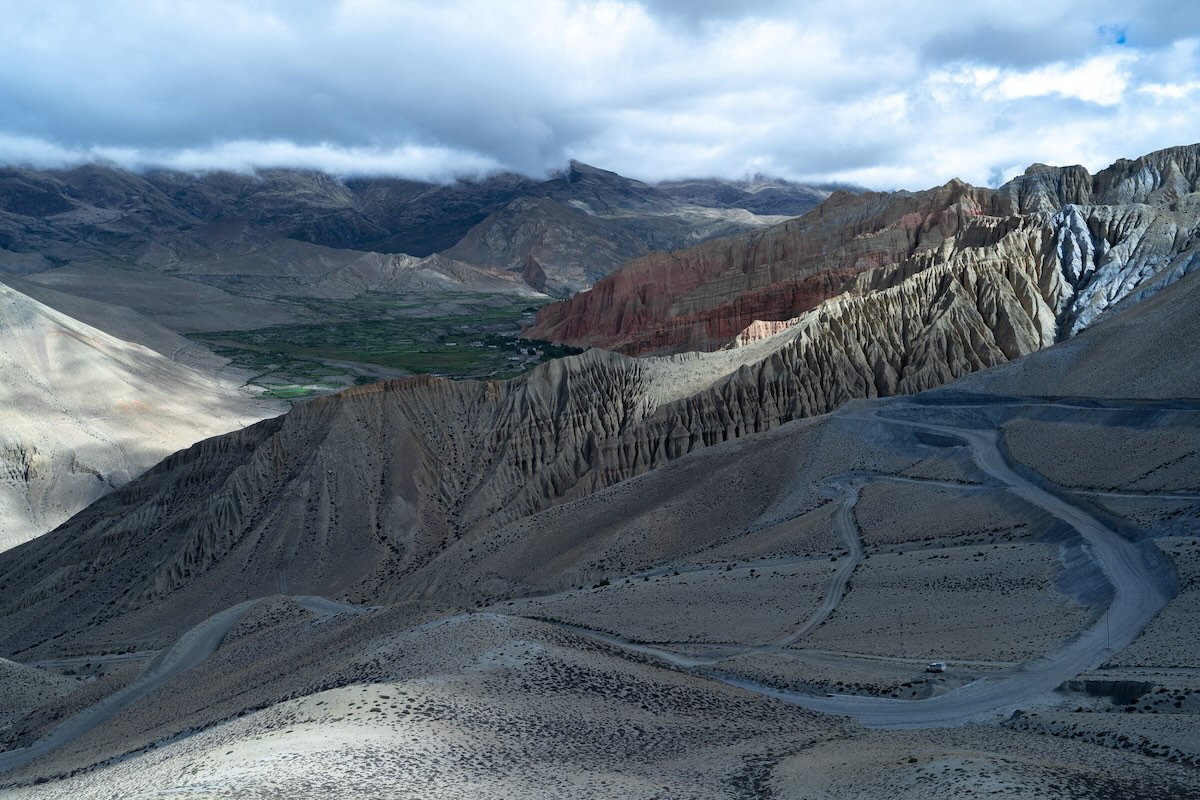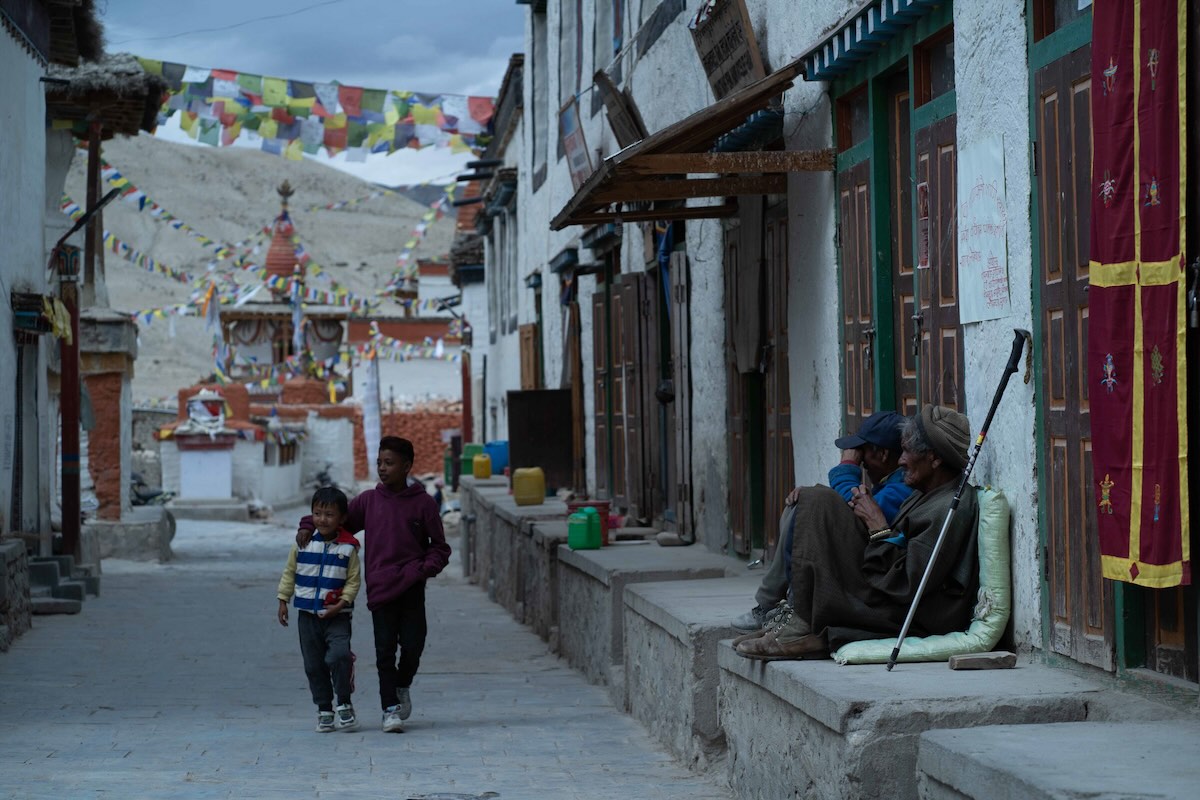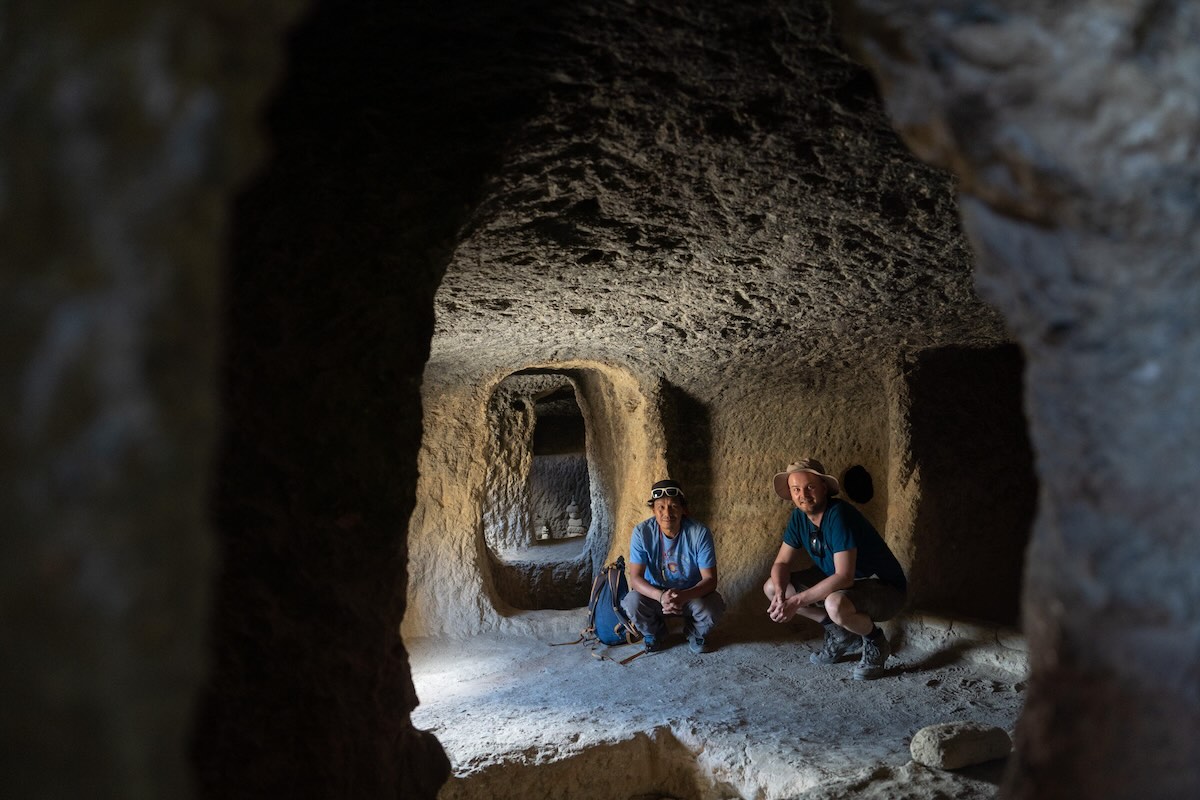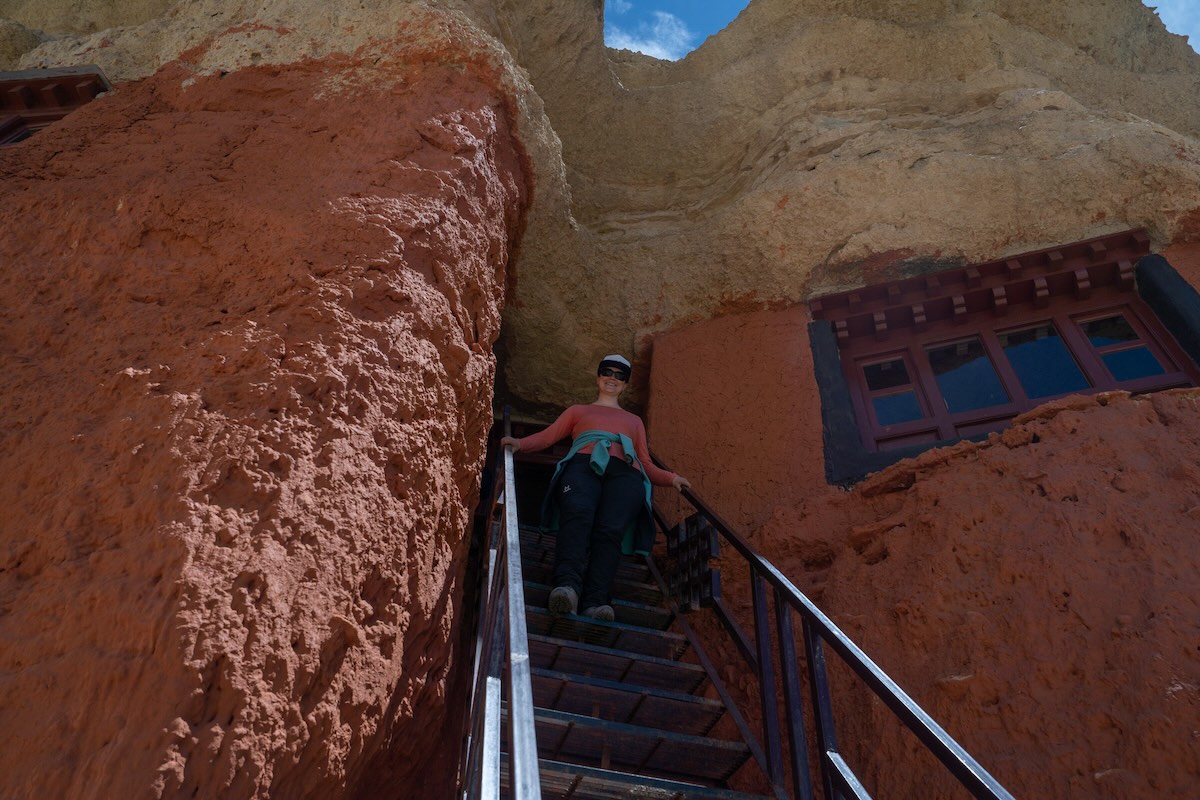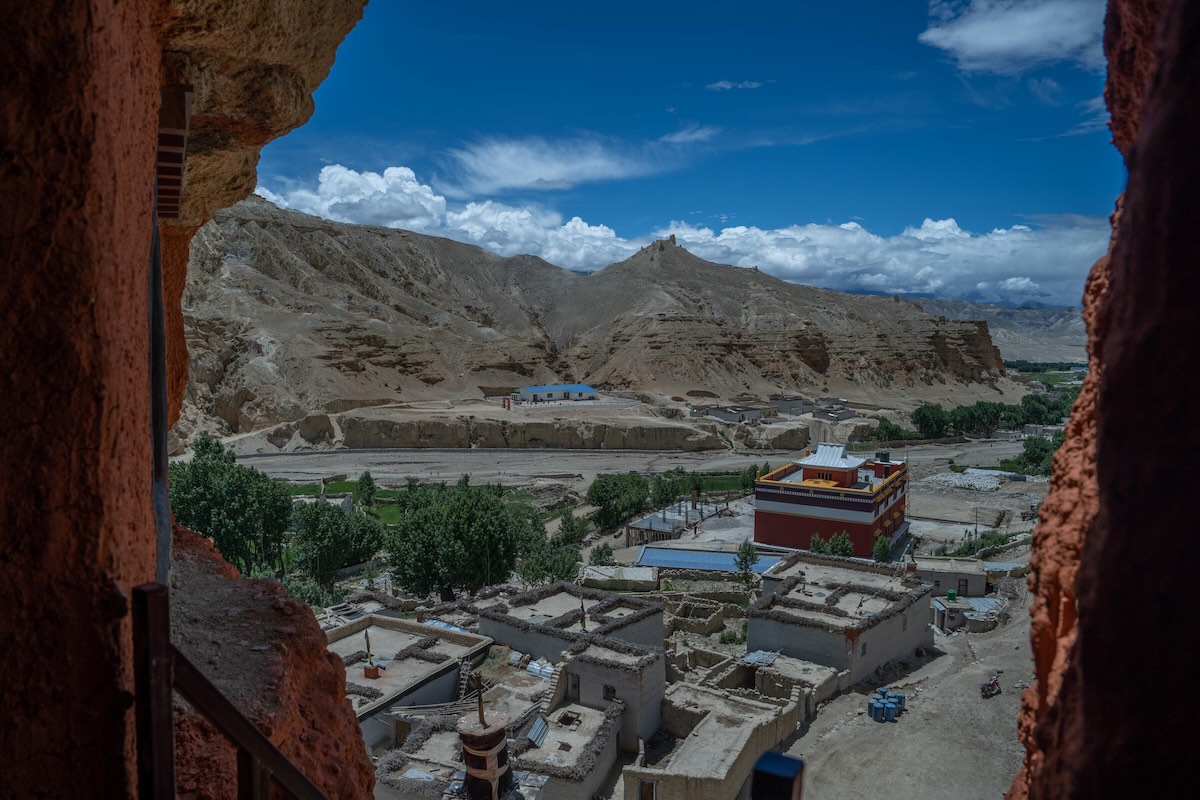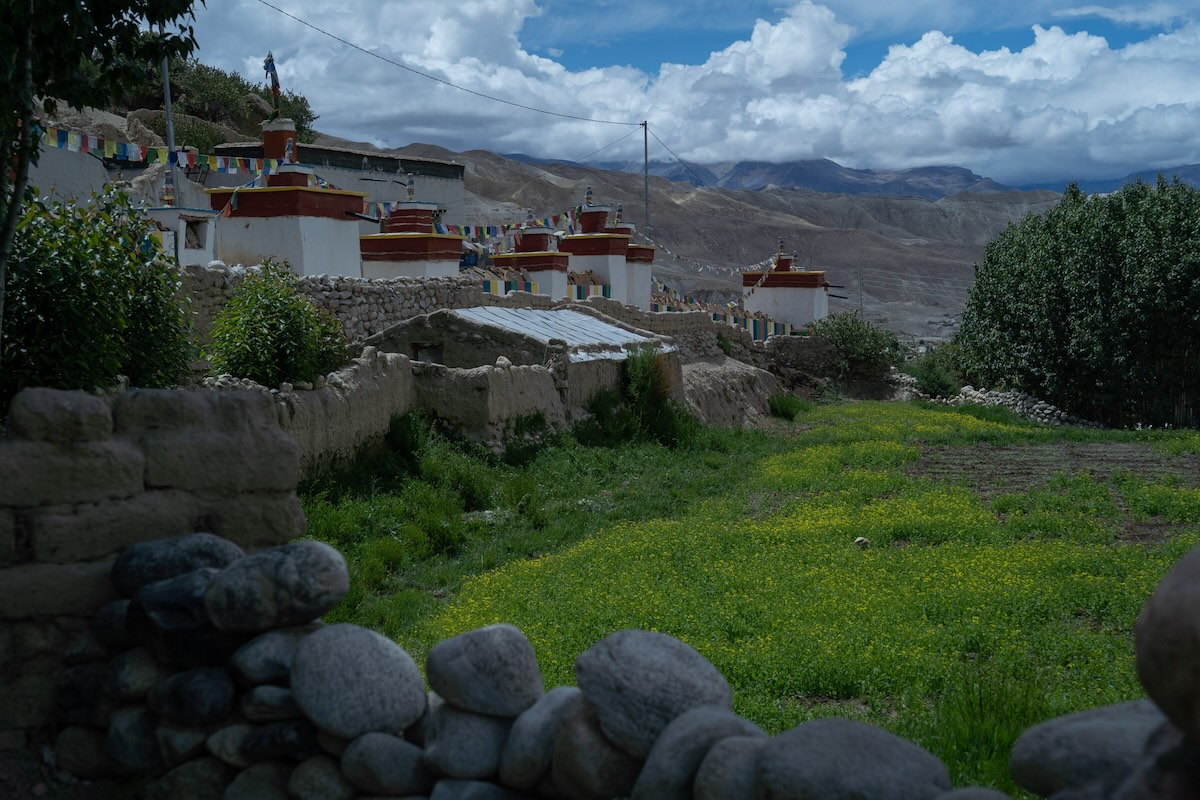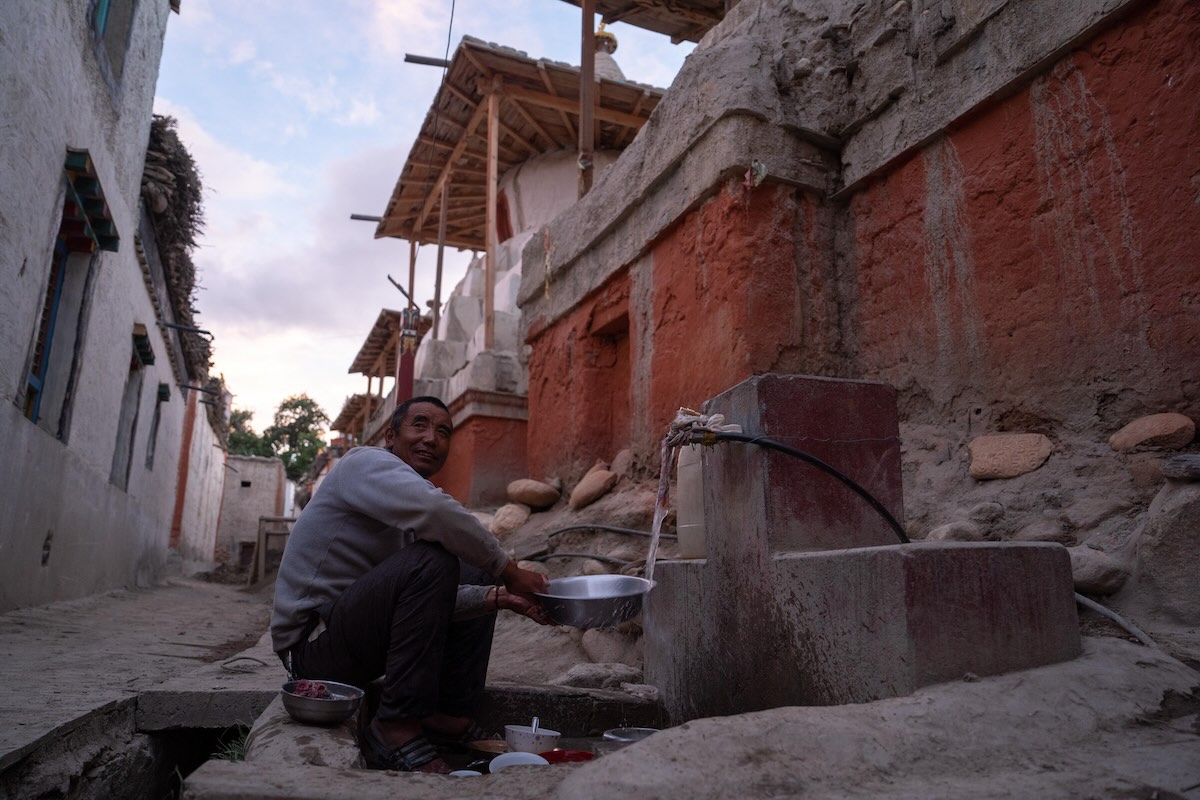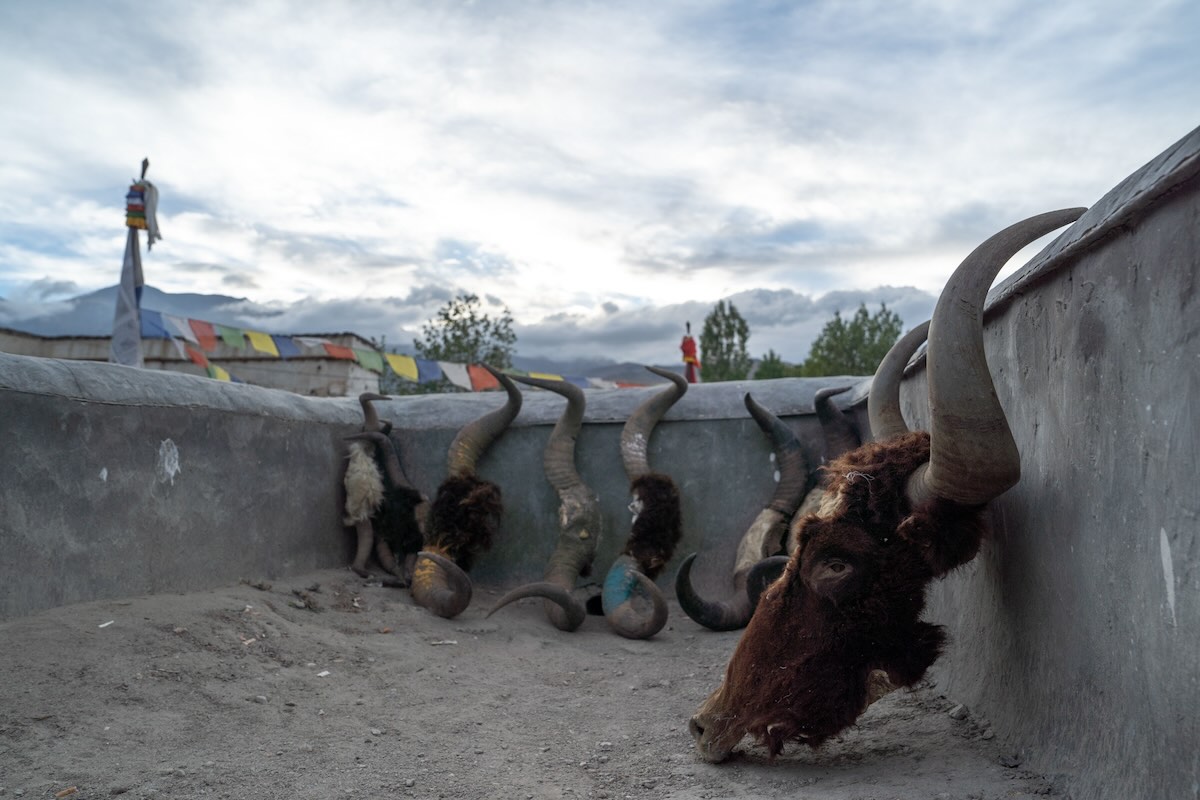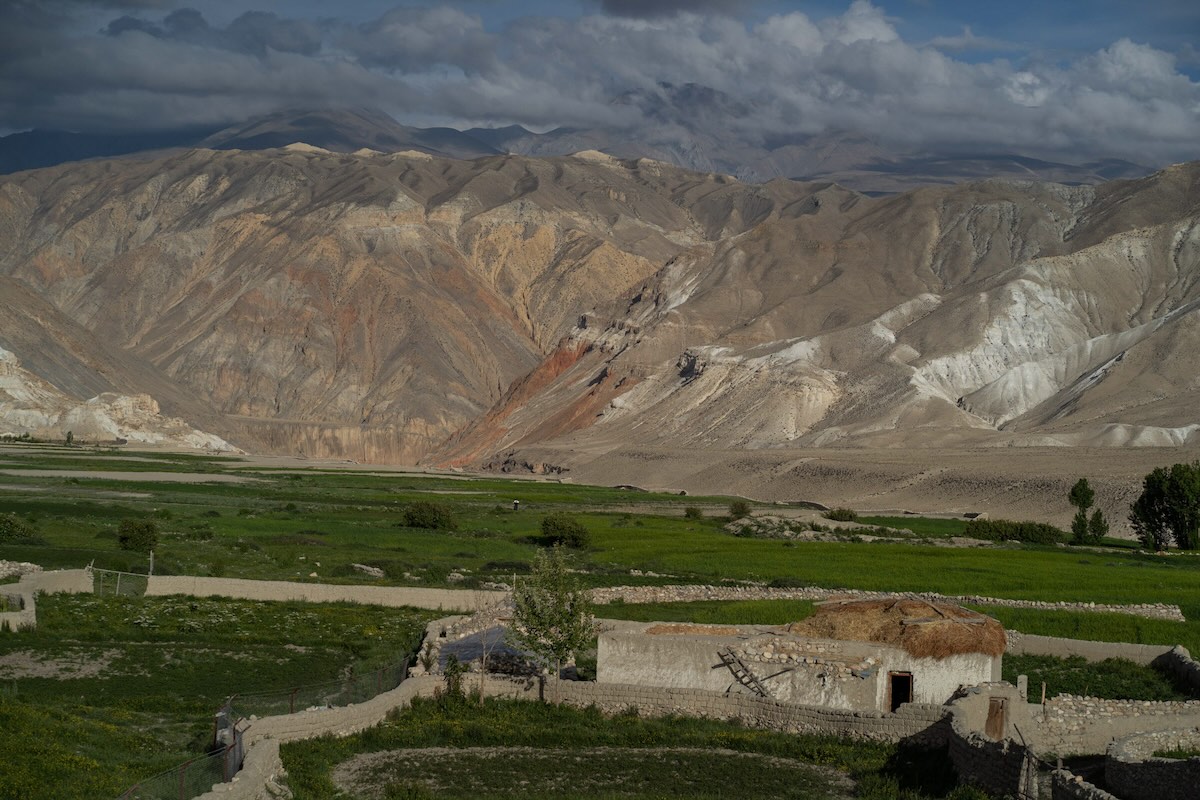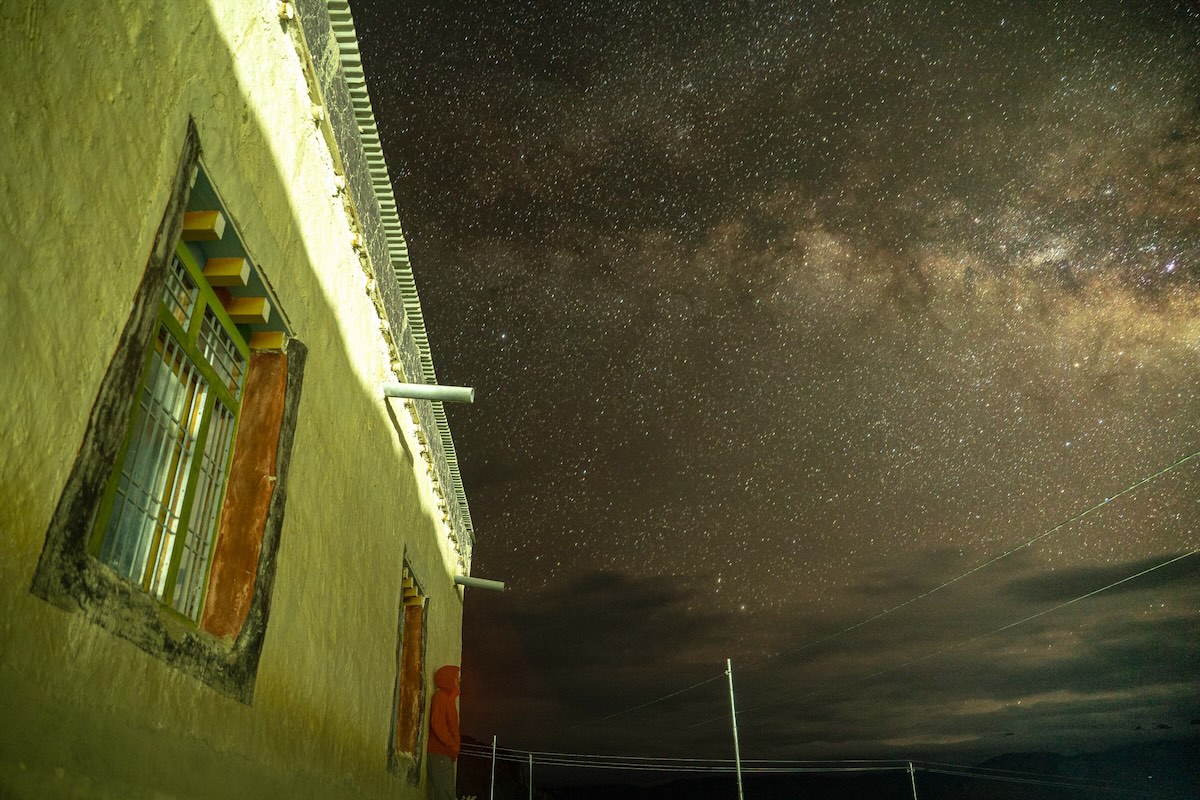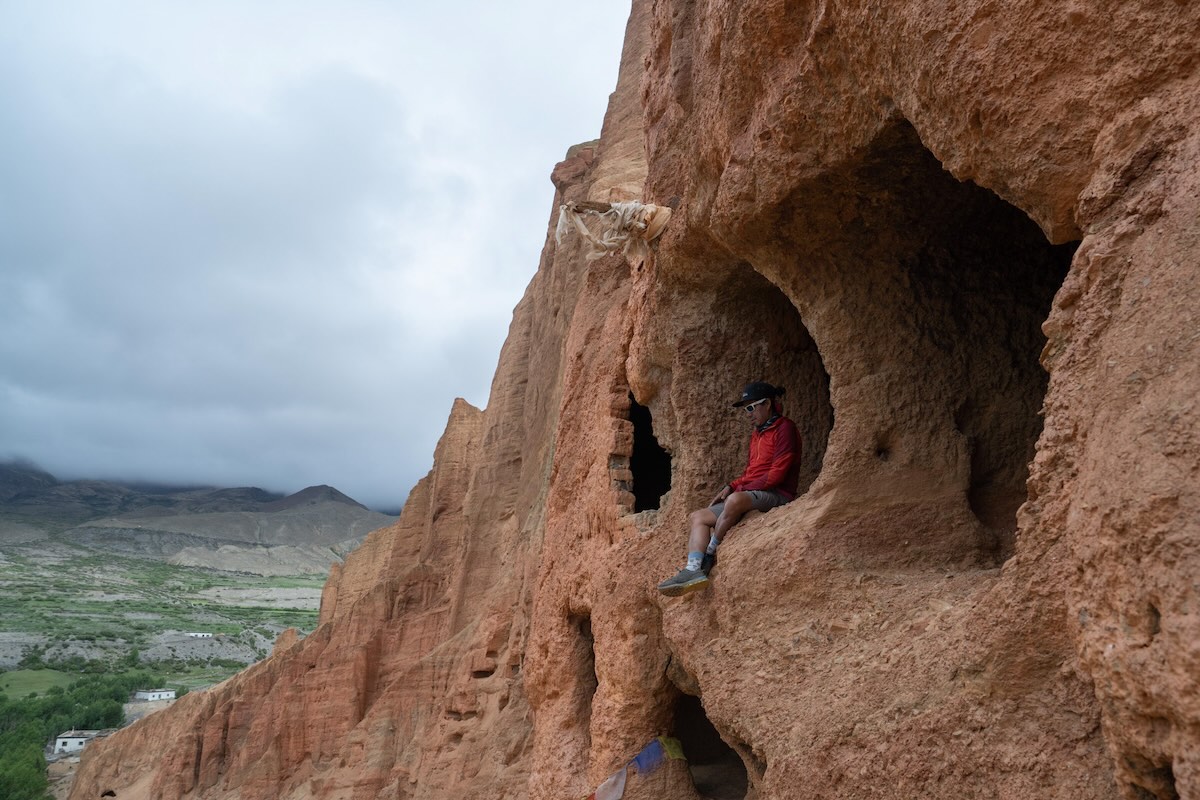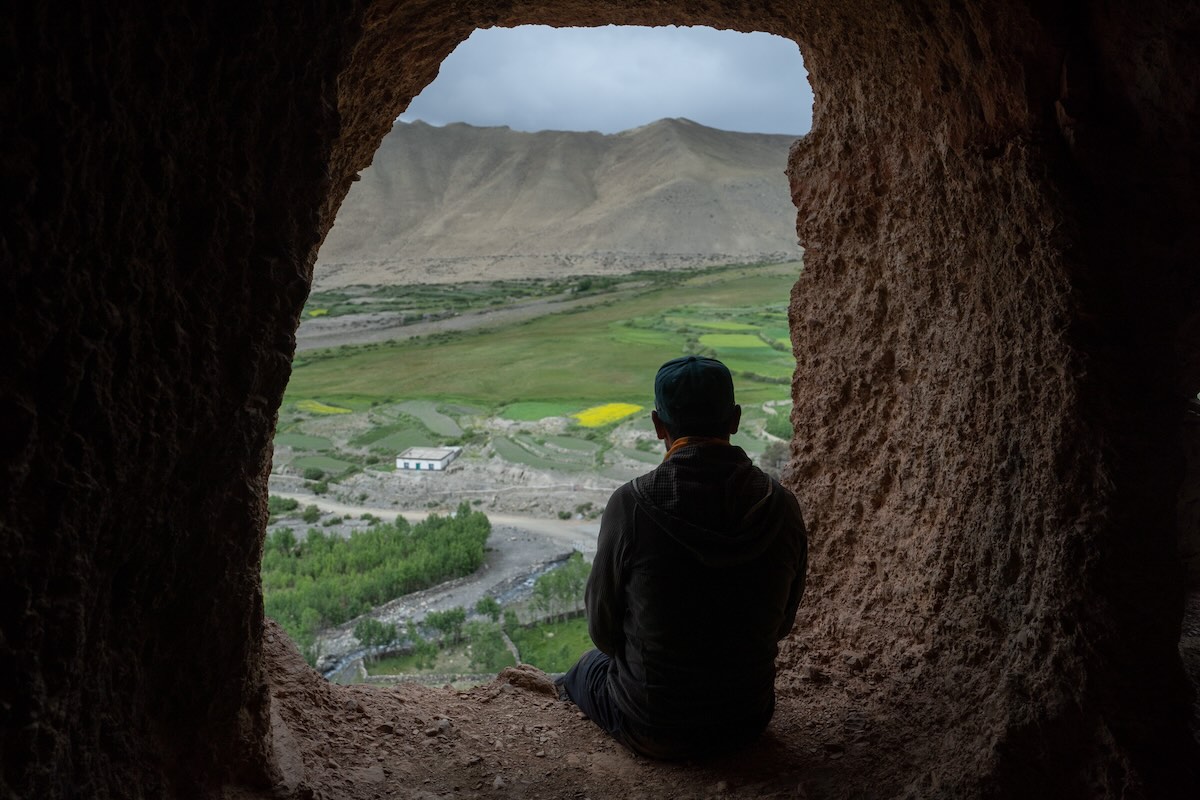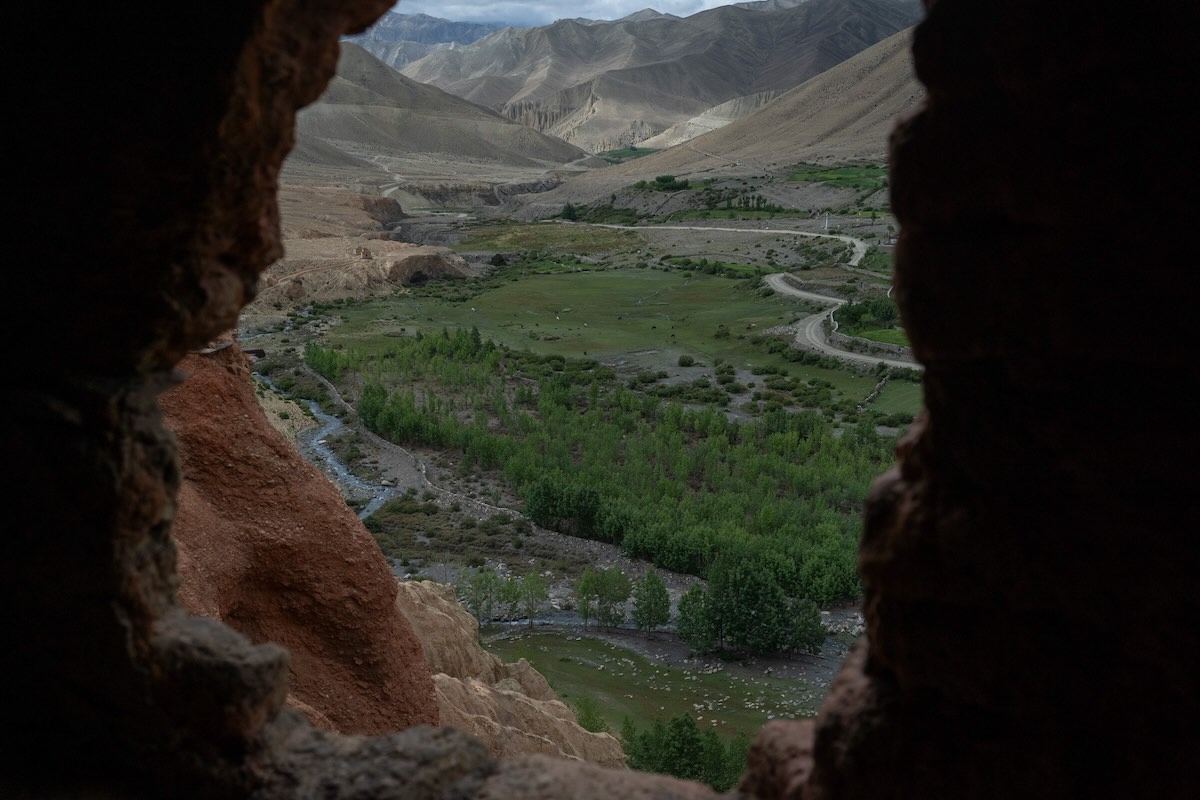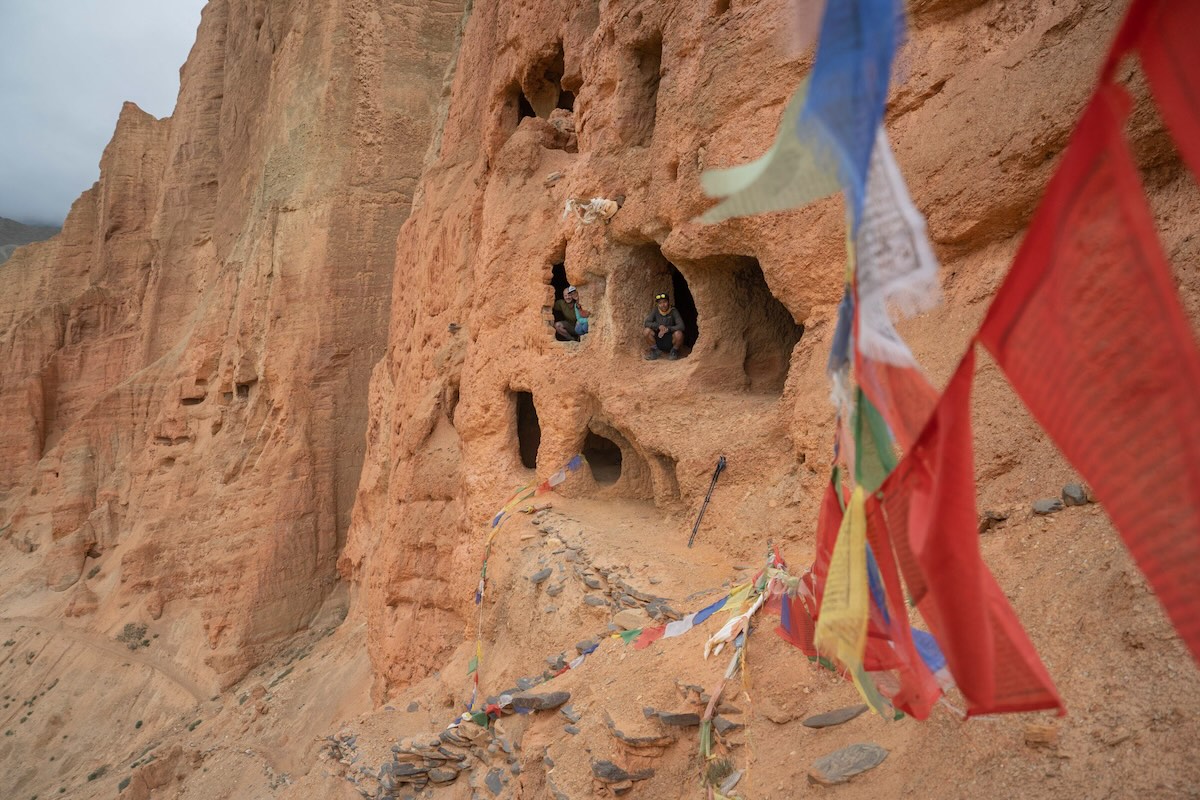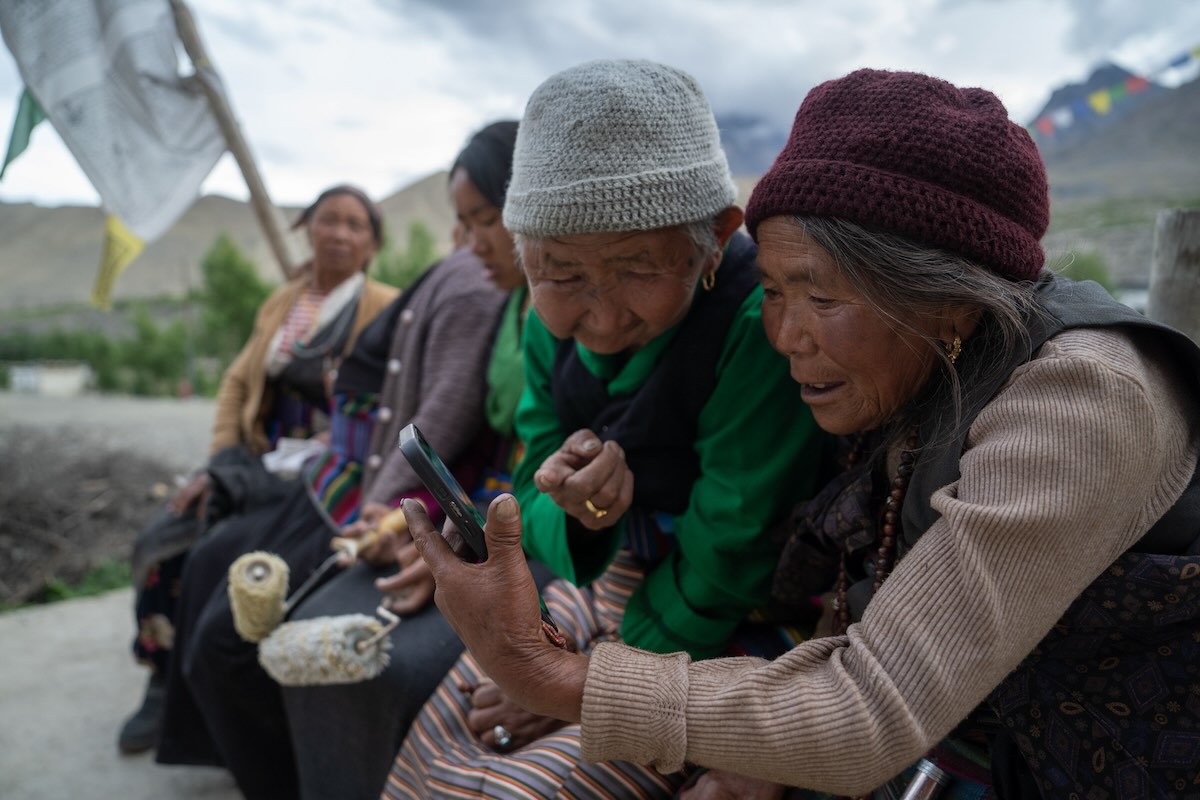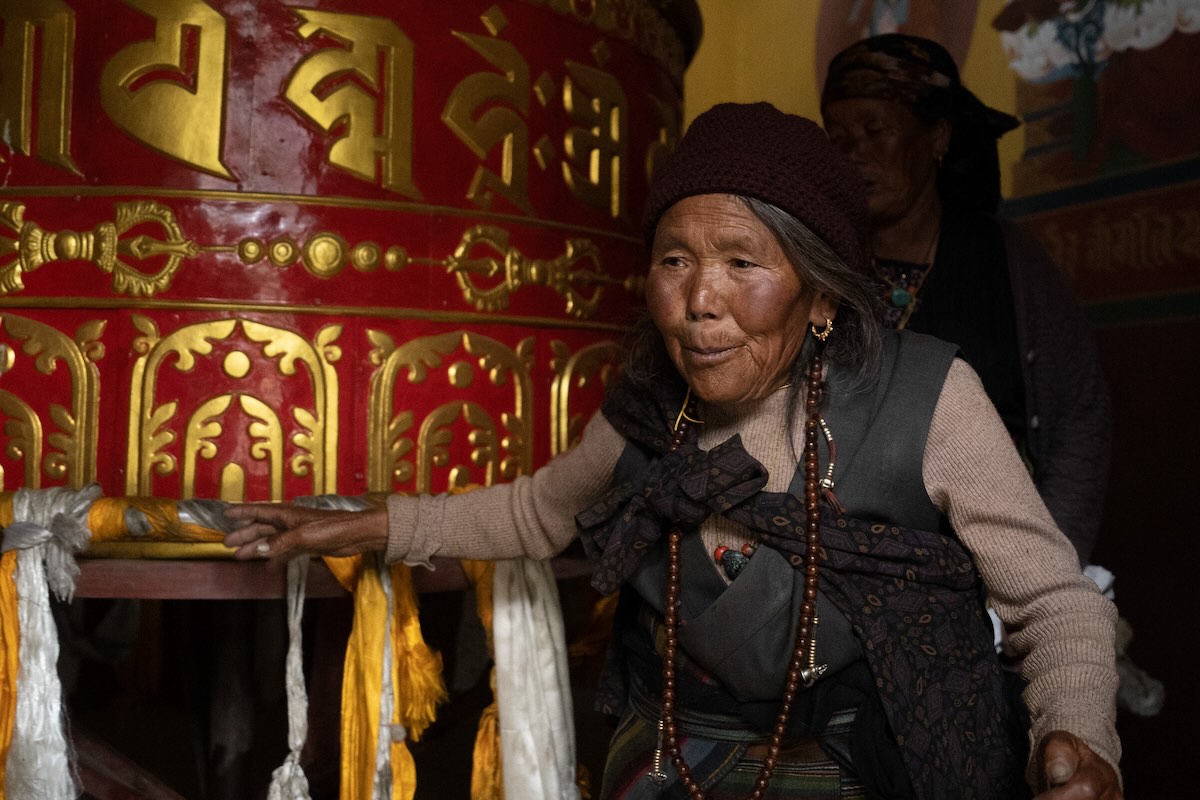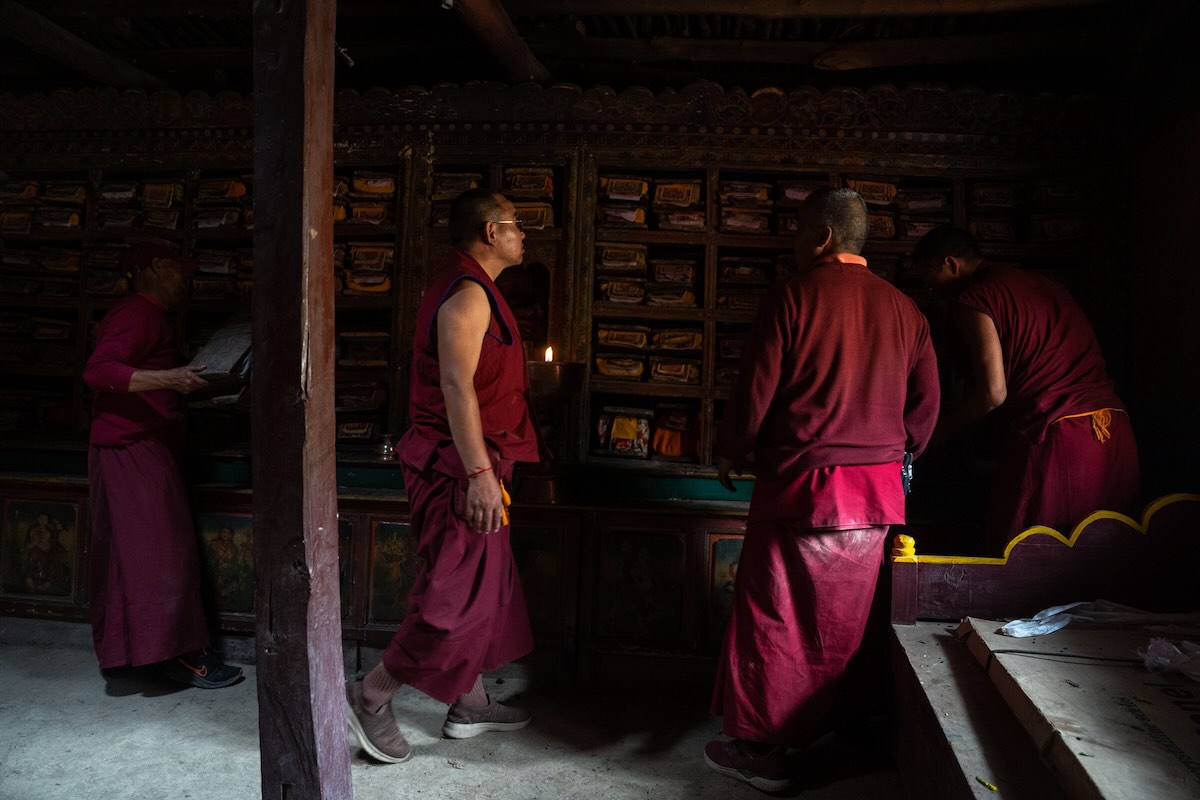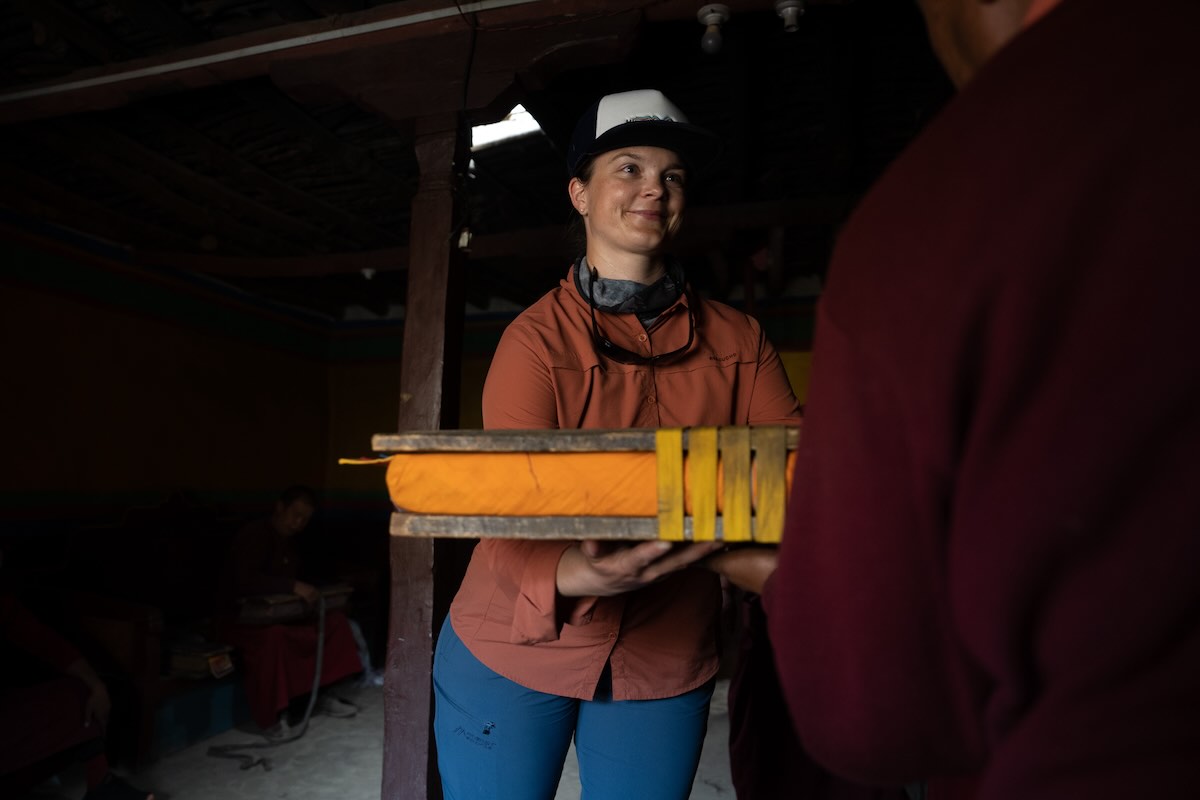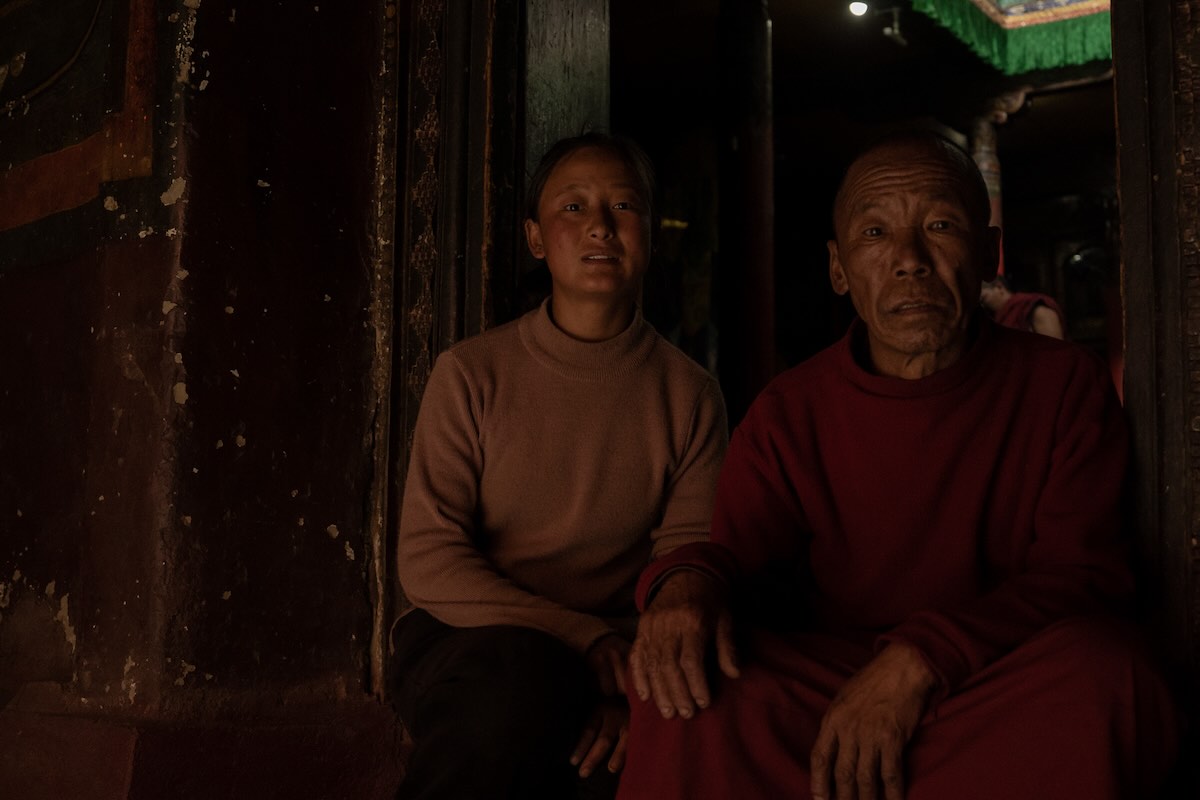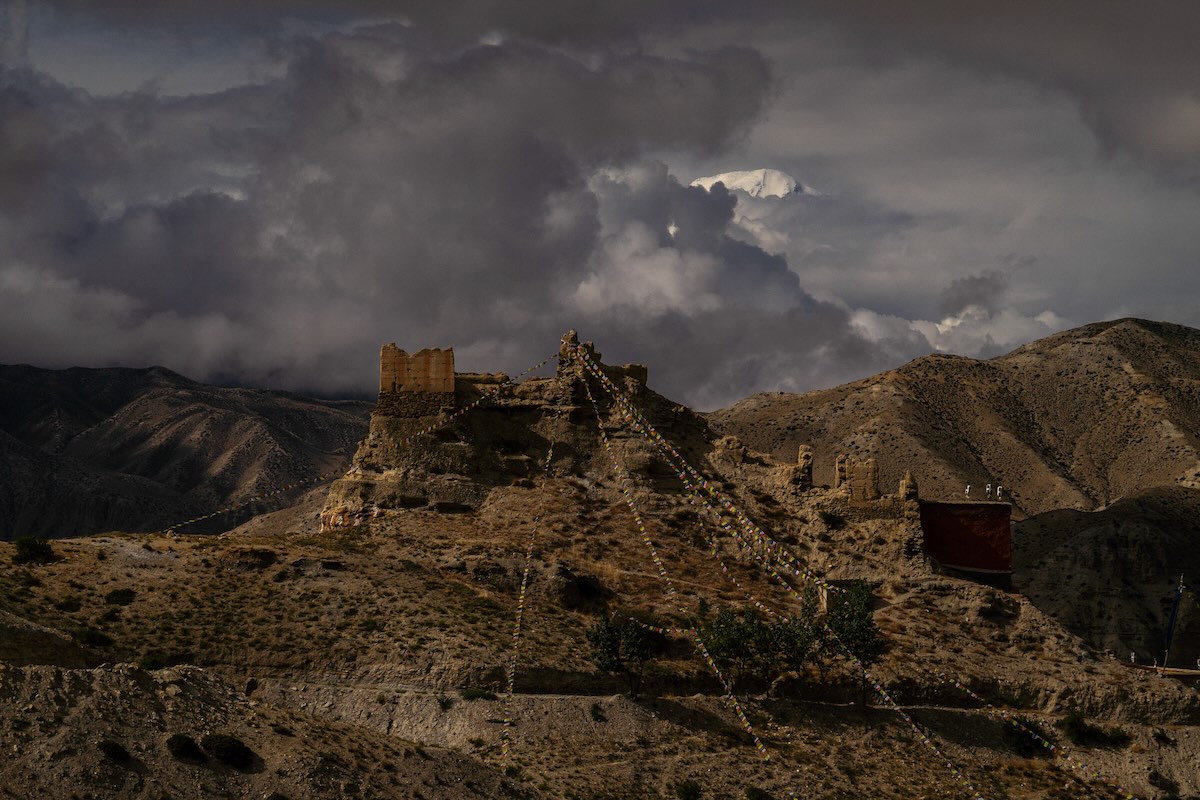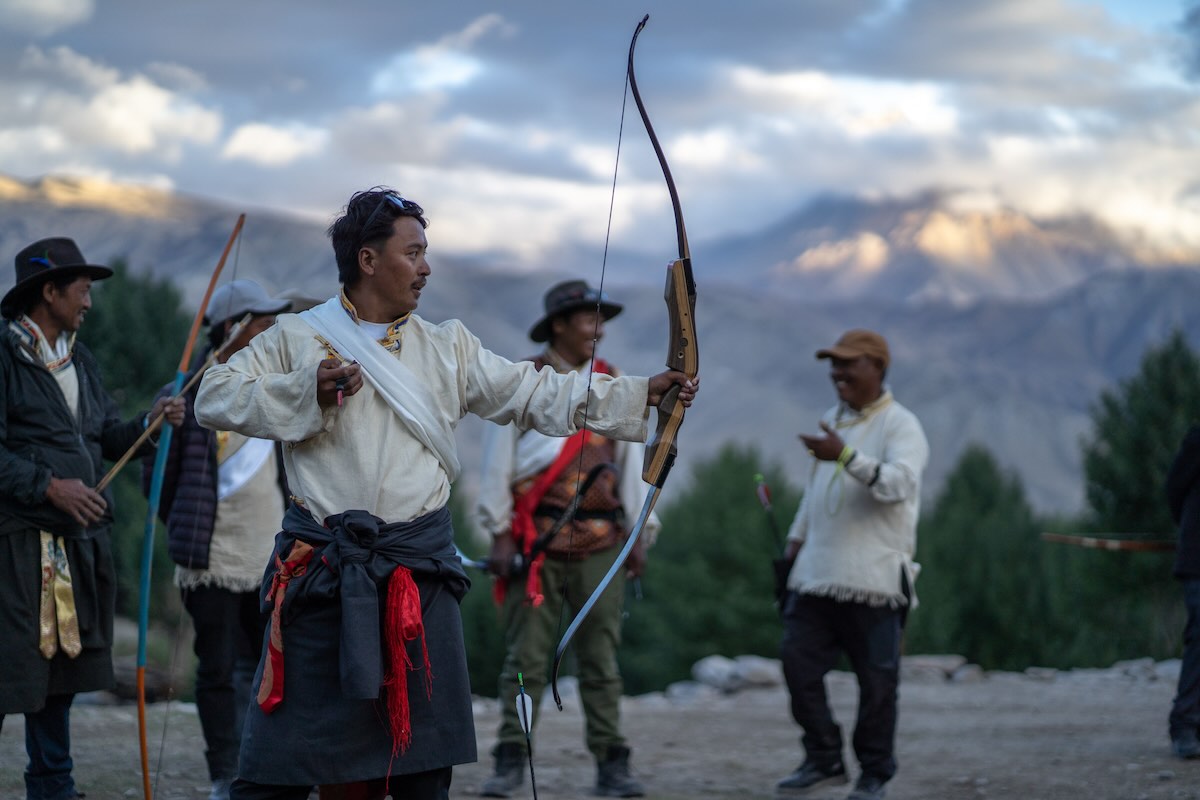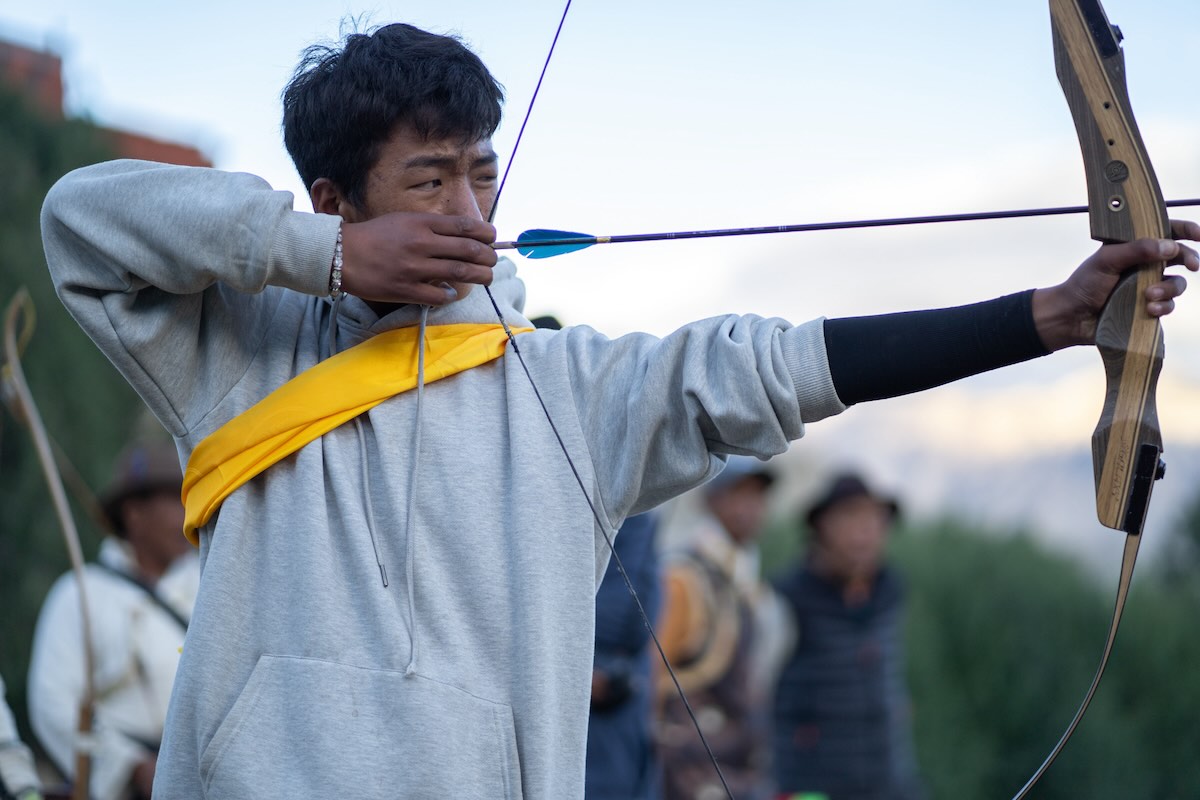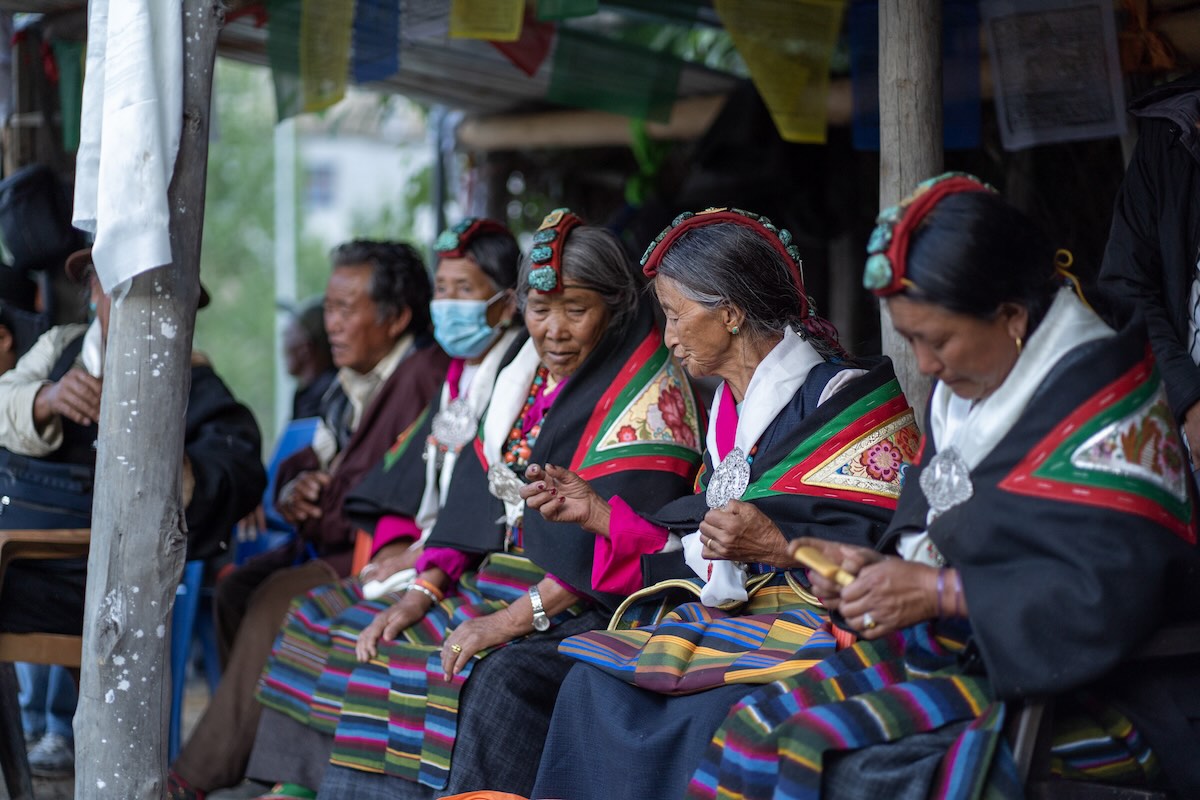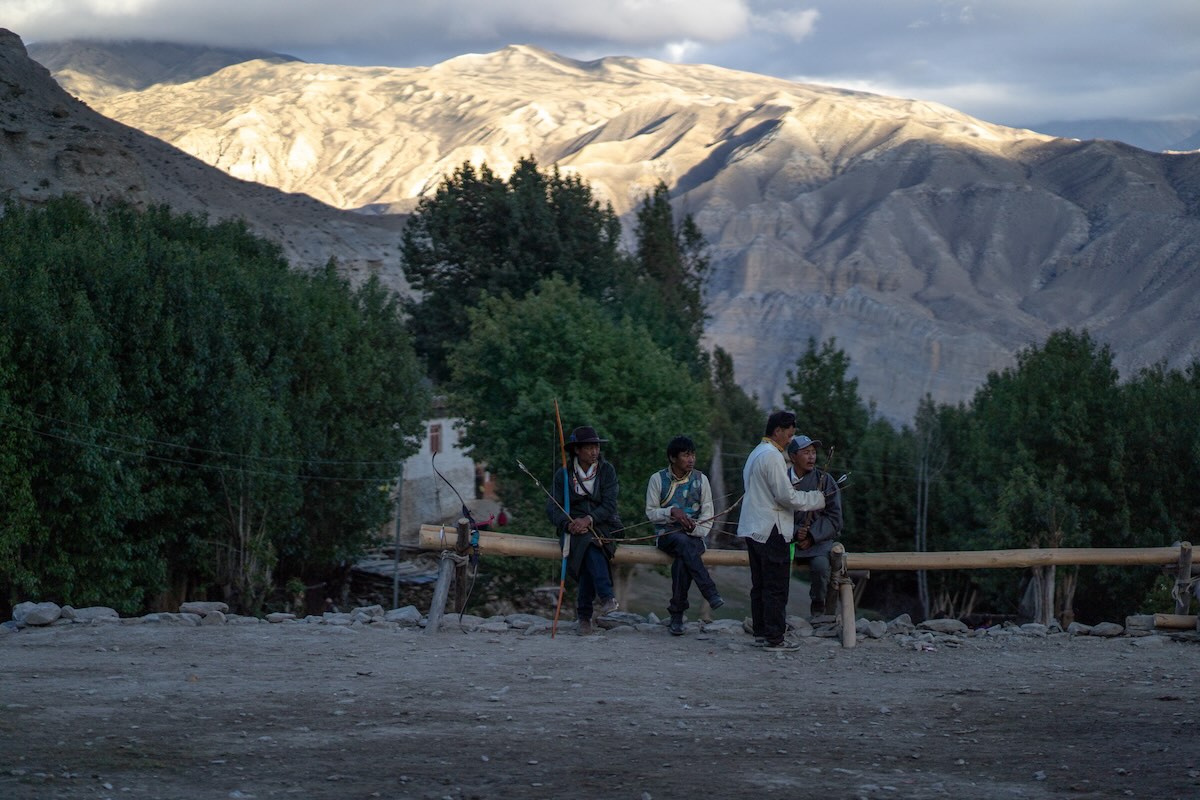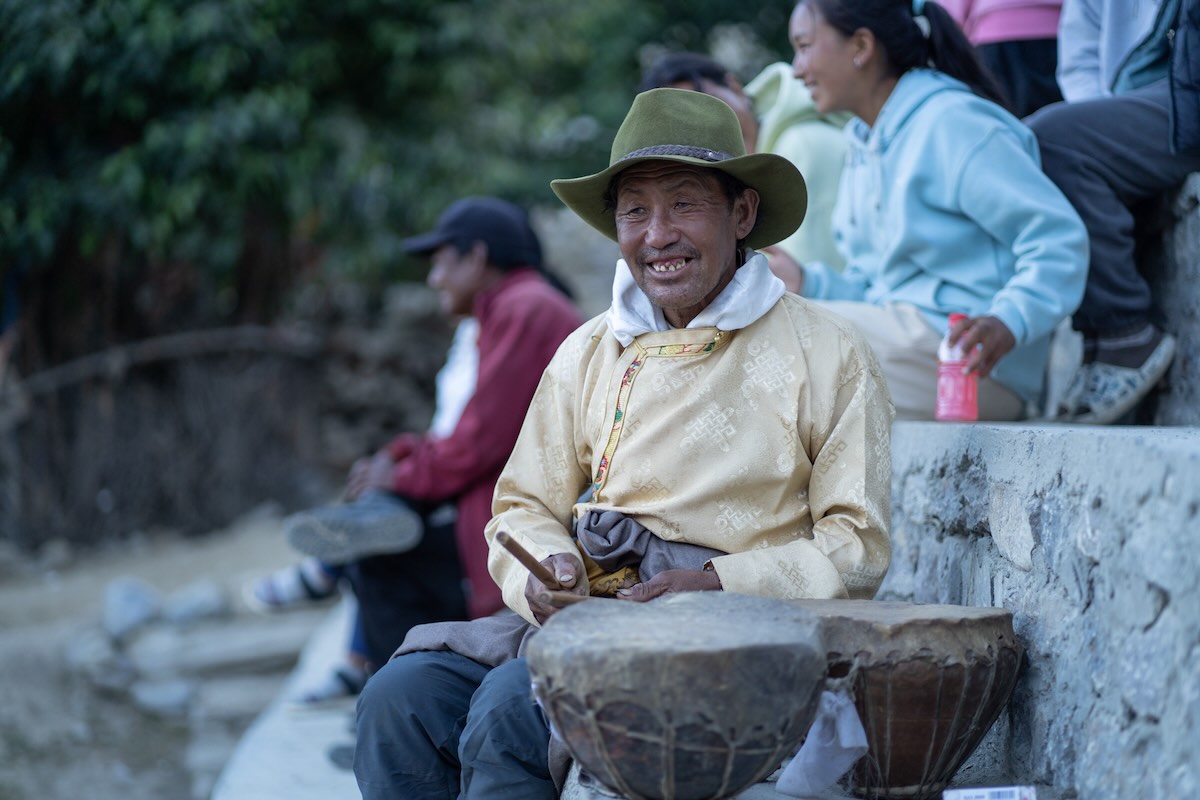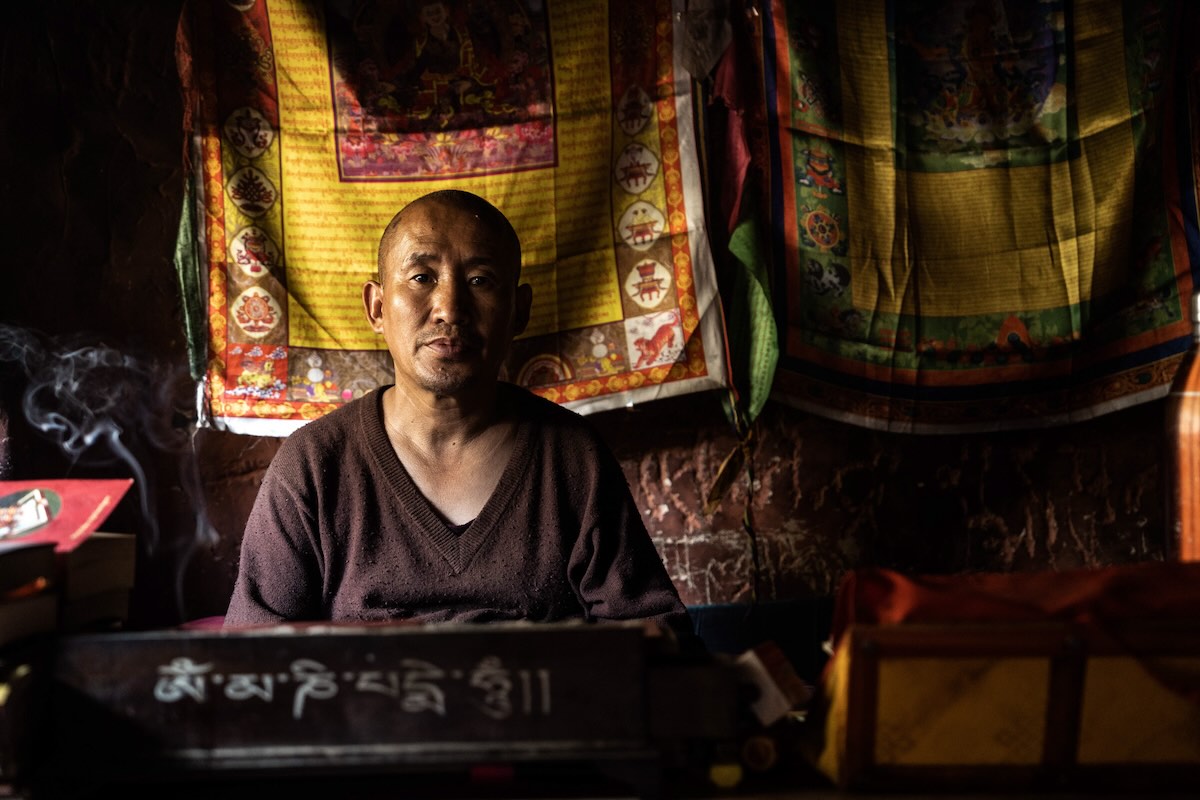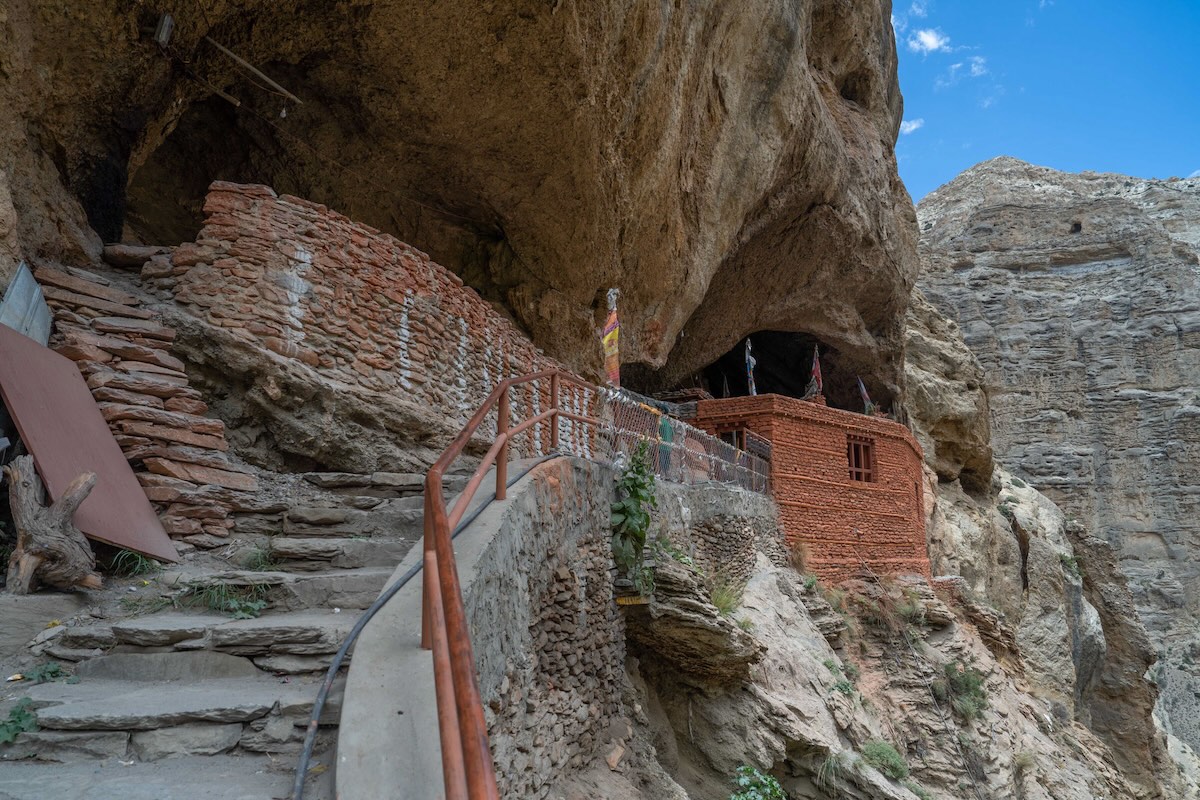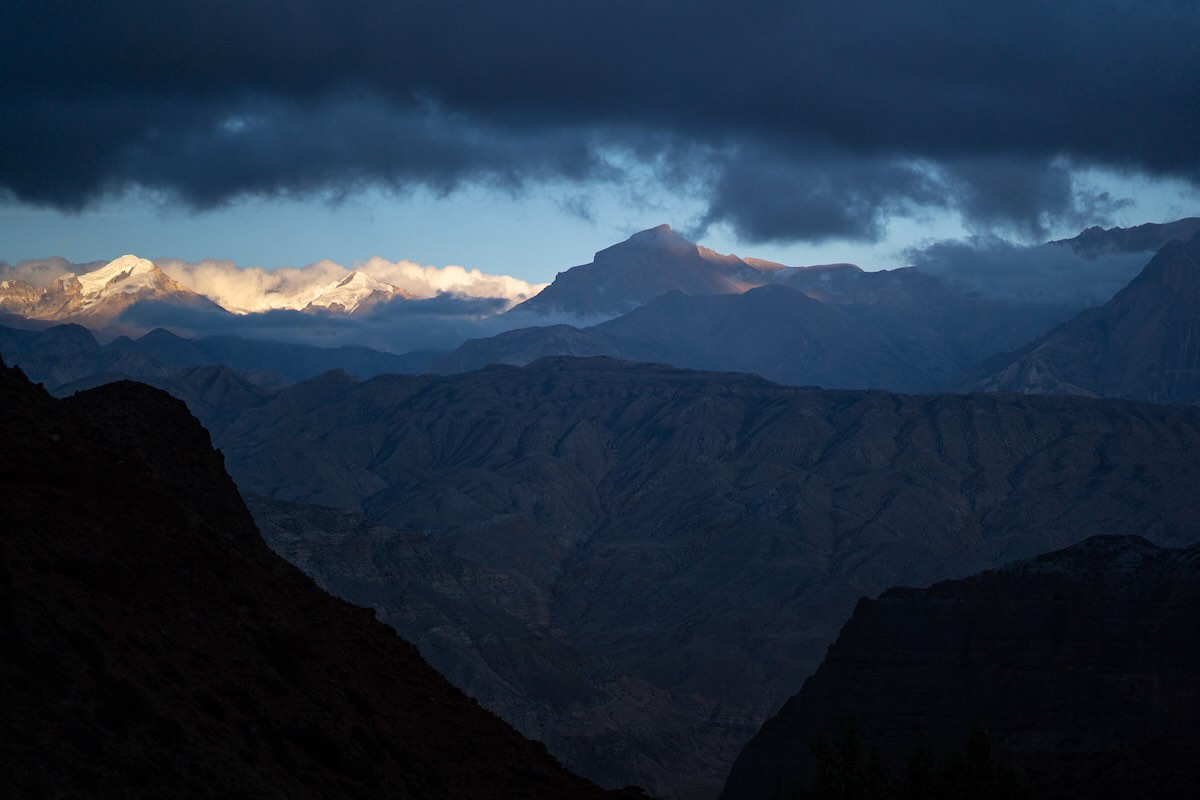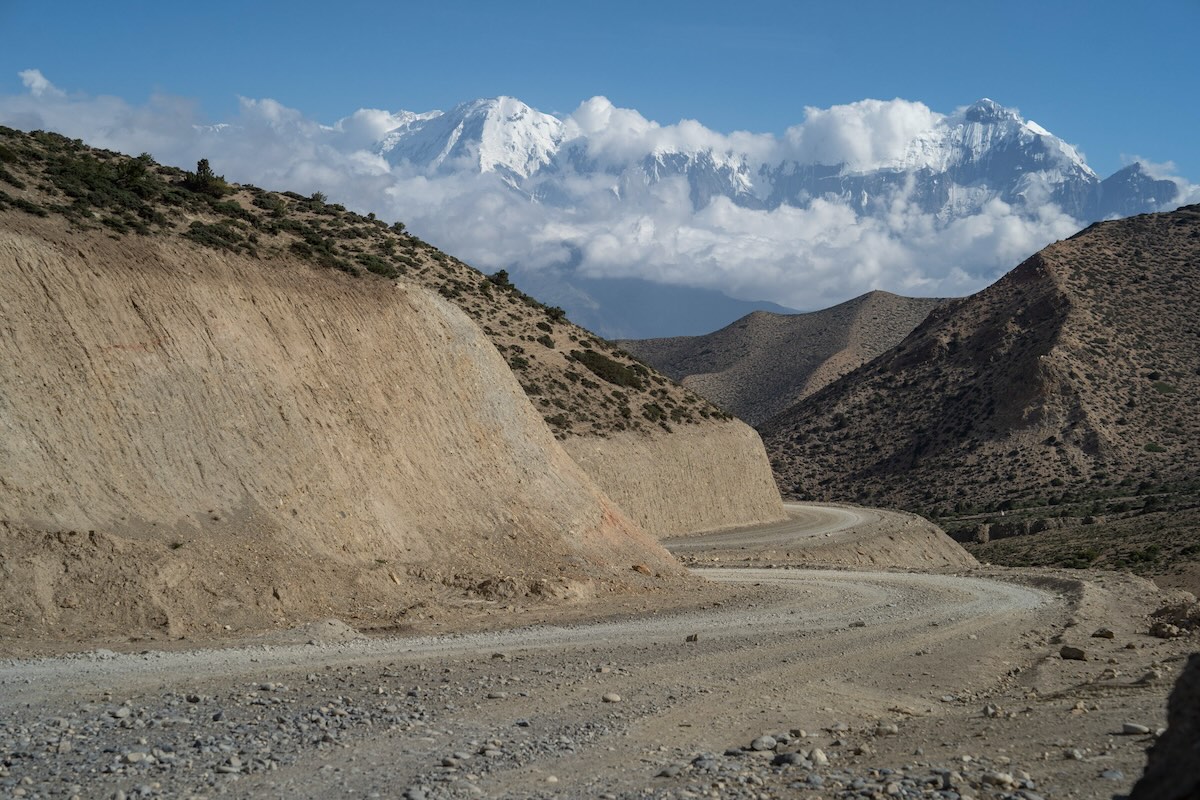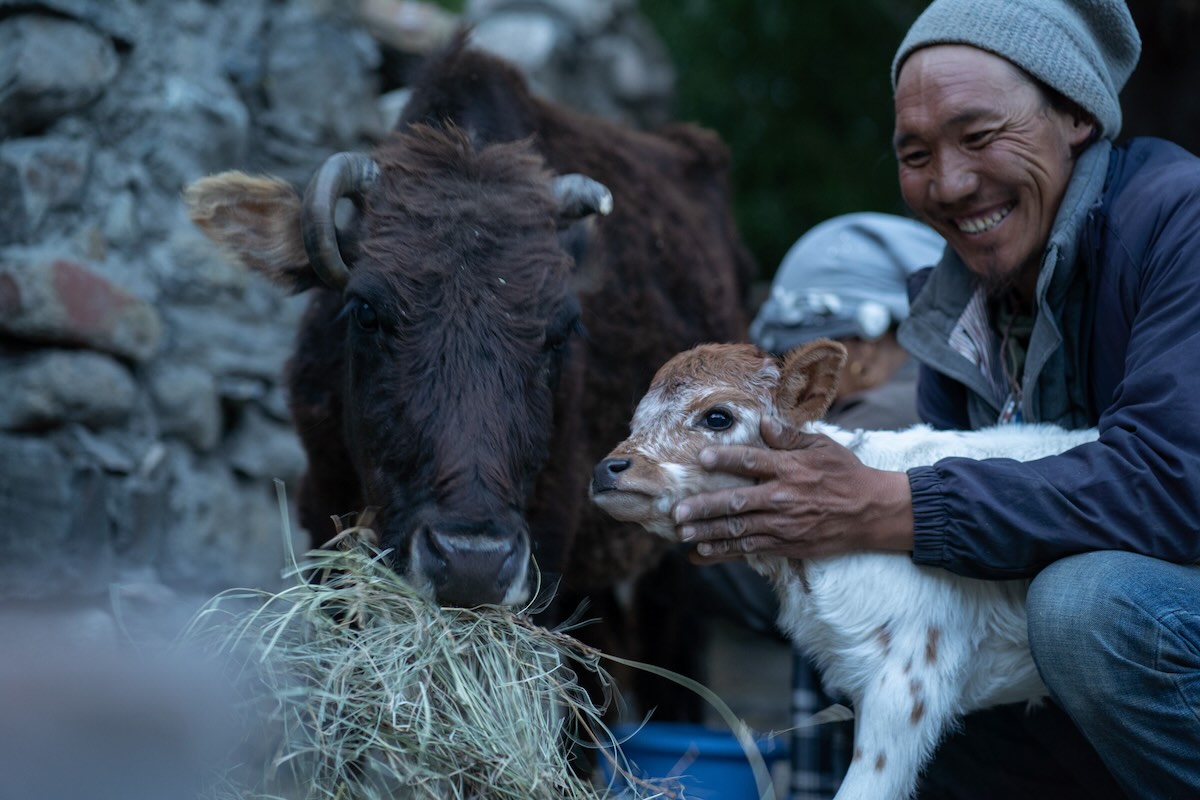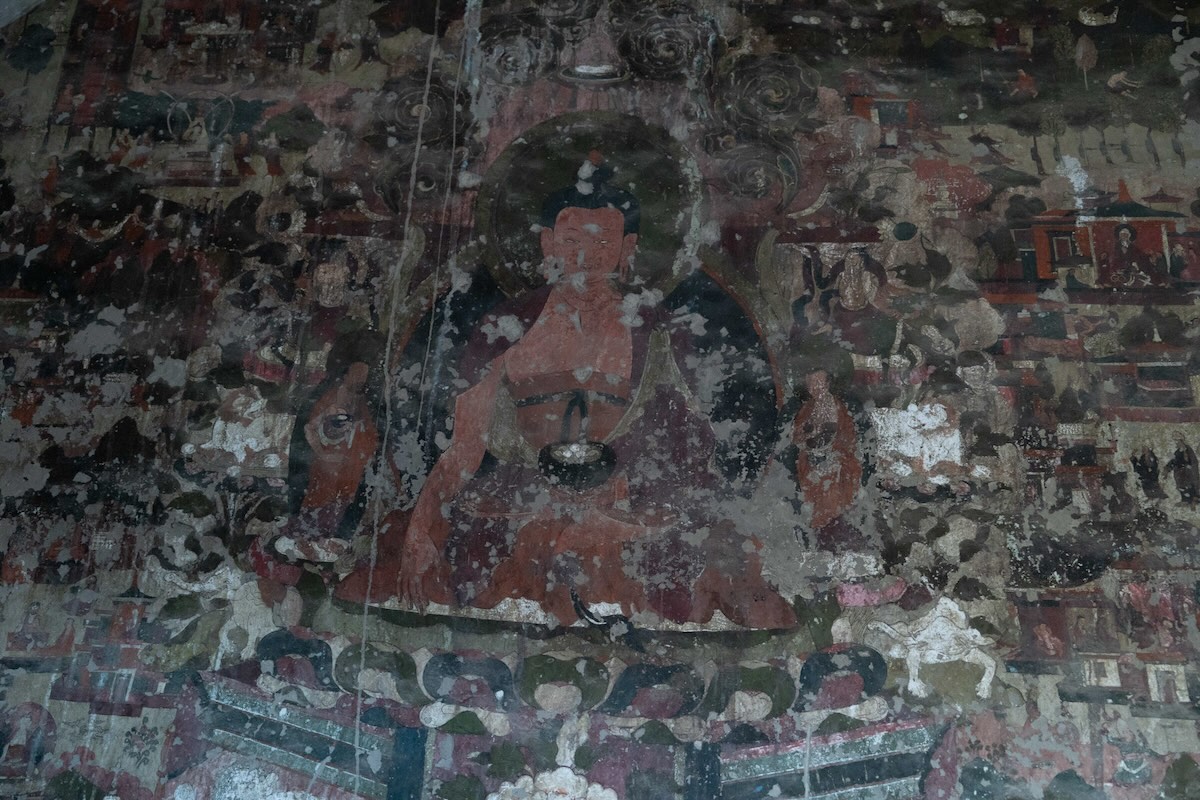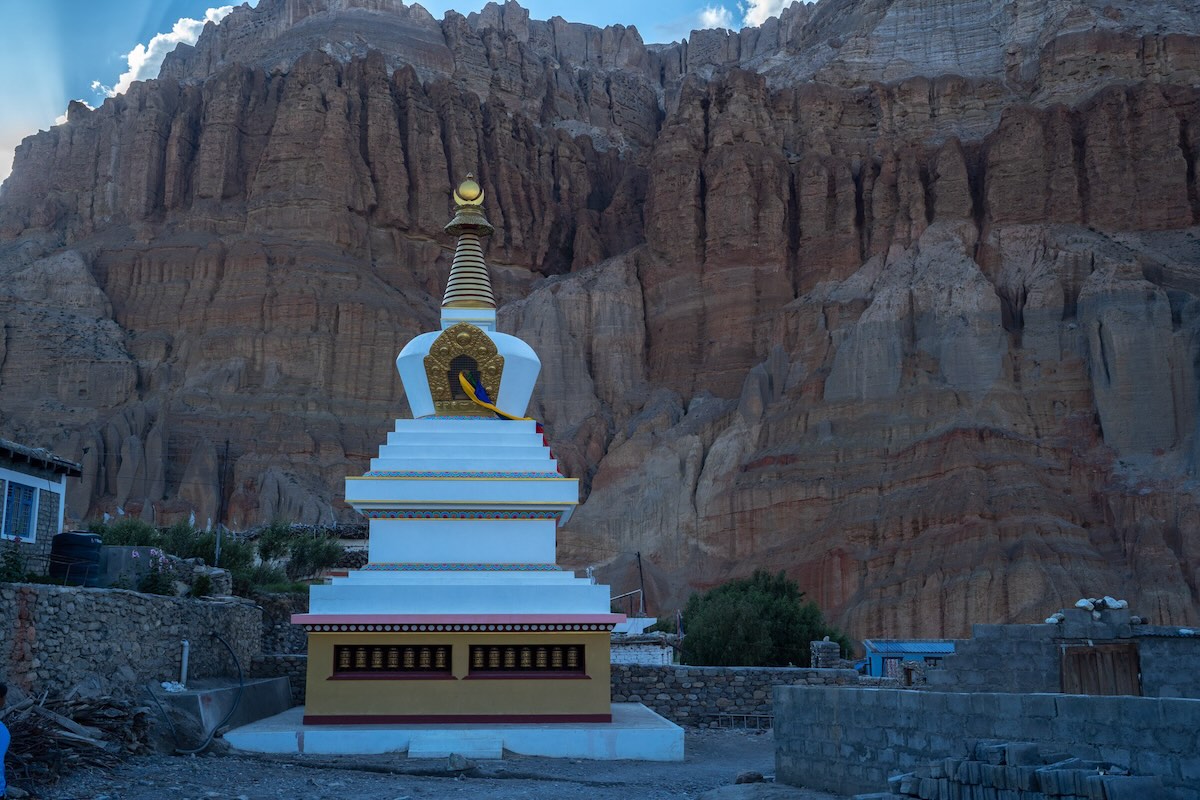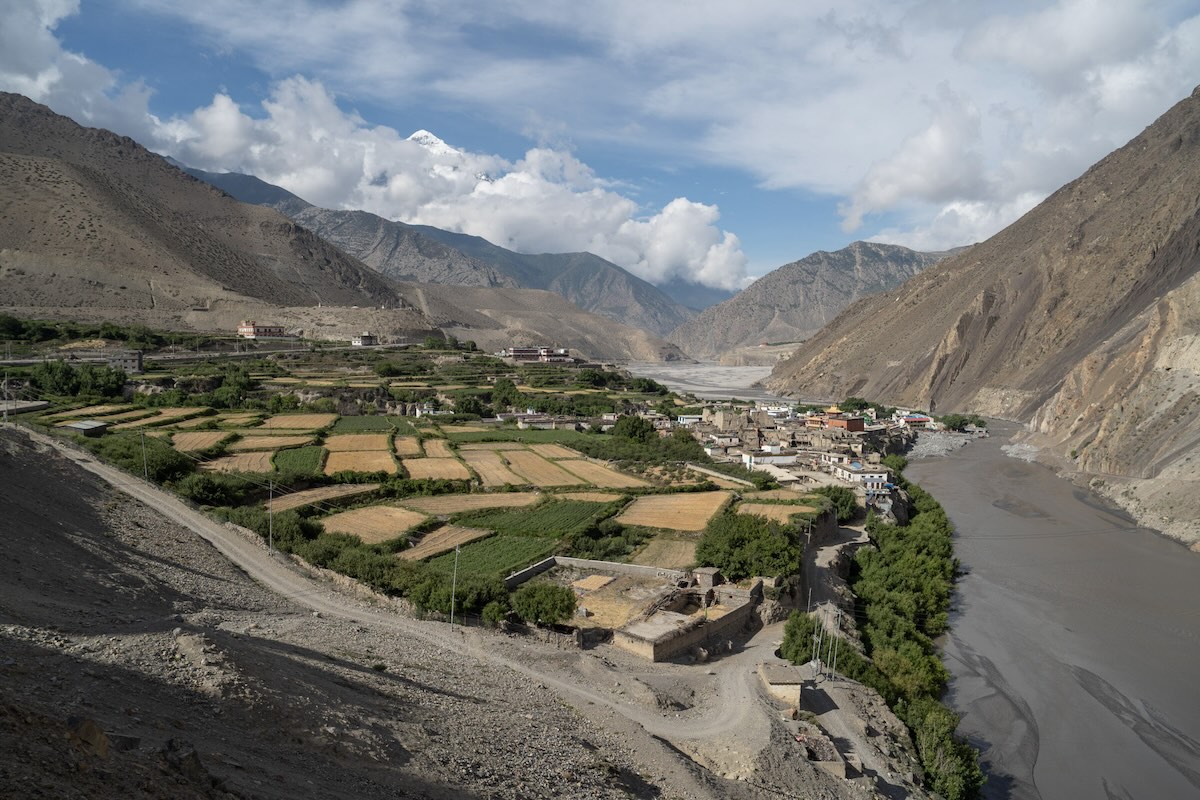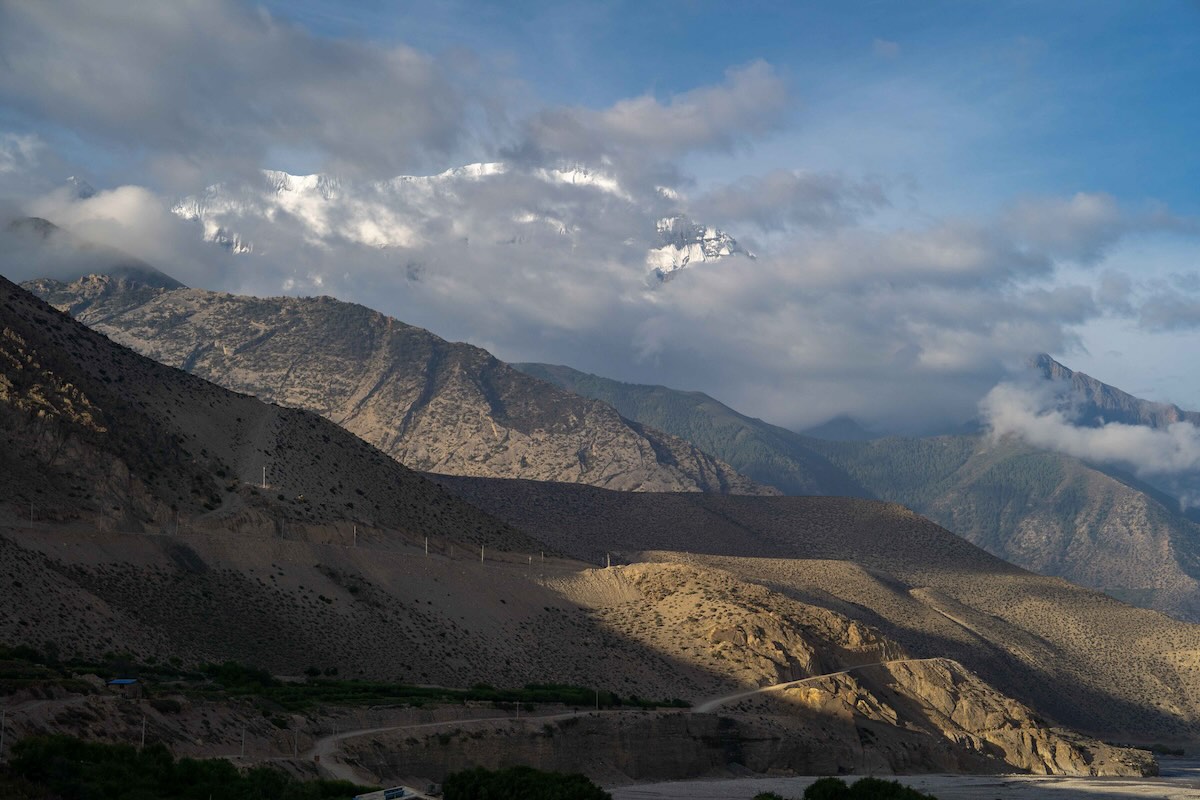DAYS
15
DIFFICULTY
Easy/Moderate
MAX ALTITUDE
4,000 M
ACCOMMODATION
Teahouse
DAYS
15
DIFFICULTY
Easy/Moderate
MAX ALTITUDE
4,000 M
ACCOMMODATION
Teahouse
Trip Overview
Upper Mustang, often referred to as the “Last Forbidden Kingdom,” is one of Nepal’s most enchanting and culturally rich regions. Nestled in the rain shadow of the Himalayas, this remote area offers a unique blend of breath-taking landscapes, ancient monasteries and a rich tapestry of Tibetan culture. The stark, arid landscapes are characterized by dramatic cliffs, colourful rock formations and vast stretches of desert-like terrain, providing a striking contrast to the lush greenery found in other parts of Nepal. The journey through Upper Mustang reveals hidden caves, deep canyons and high-altitude passes, offering trekkers awe-inspiring views at every turn.
Once a part of the Tibetan Kingdom of Lo, Upper Mustang’s cultural heritage remains deeply rooted in Tibetan traditions. The walled city of Lo Manthang, the capital of the former Kingdom of Lo, stands as a testament to the area’s rich history. Visitors can explore ancient monasteries adorned with intricate murals, traditional Tibetan homes and the royal palace, which still houses the king of Mustang.
The people of Upper Mustang are predominantly of Tibetan descent and their way of life has remained largely unchanged for centuries. Known as Loba, the locals are renowned for their warm hospitality and deeply spiritual lifestyle. Festivals such as Tiji, which celebrates the victory of good over evil, are vibrant displays of traditional music, dance, and rituals.
Day 1: Arrival and transfer to hotel. Collect passports for Upper Mustang restricted area permit. O/N Kathmandu
Day 2: Trek briefing. Tours of Pashupatinath temple and Boudhanath stupa. O/N Kathmandu
Day 3: Morning flight to Pokhara (30 minutes). Transfer to hotel. Afternoon boat ride on Phewa Lake and hike to the Peace Pagoda. Return by taxi. O/N Pokhara.
Day 4: Drive Pokhara to Kagbeni, 2,800m (c.7-8 hours by Jeep), stopping for lunch along the way.
Day 5: Kagbeni to Chhuksang (2,950m). Total Distance: 12 KM. Walk for 3 hours, reaching an altitude of 3,200 meters before descending to Tangbe village (3,000m) for lunch. Continue for about 1.5 hours to Chhuksang.
Day 6: Chhuksang to Samar (3,600m). Total Distance: 13 KM. Cross a steel bridge at Chele village base and ascend towards the Darjori La Pass (3,735m), stopping for lunch in Ghyakar. After lunch you will cross the pass before descending to Samar village.
Day 7: Samar to Ghiling (3,570m). Total Distance: 15 KM. Descend 100m, then ascend to 3,700m before visiting Ranchung Chungsi Cave (3,490m). After exploring the cave, ascend to Shangmochen (3,770m) for lunch, then contour gently down to Ghiling.
Day 8: Ghiling to Dhakmar (3,820m). Total Distance: 12 KM. Ascend 500m to a pass (41,50m), then descend to Ghimi for lunch. Continue to Dhakmar, noted for its red cliffs.
Day 9: Dhakmar to Marang (3780m). Total Distance: 9 KM. Climb to Muila Pass (4,170m), descend to Ghar Gompa (3,950m) for lunch and exploration. Continue the descent to Marang.
Day 10: Marang to Lo Manthang (3,810m). Total Distance: 13 KM. Ascend to Manga La Pass (4,230m), then descend to Lo Manthang. Late lunch and free afternoon in Lo Manthang.
Day 11: Visit sky caves at Chosar, then return to Lo Manthang for further exploration.
Day 12: Drive from Lo Manthang to Jomsom (c.6 hours by jeep), stopping for lunch along the way.
Day 13: Drive back to Pokhara (c.6-7 hours by jeep). Free evening in Pokhara. O/N Pokhara
Day 14: Fly to Kathmandu in the afternoon. O/N Kathmandu.
Day 15: Departure from Nepal.
Notes:
The trek itinerary is a guide only and may be subject to change at short notice
Upper Mustang Jeep Tour
Duration: 14 Nights / 15 Days
Upper Mustang, often referred to as the “Last Forbidden Kingdom,” is one of Nepal’s most enchanting and culturally rich regions. Nestled in the rain shadow of the Himalayas, this remote area offers a unique blend of breath-taking landscapes, ancient monasteries and a rich tapestry of Tibetan culture. The stark, arid landscapes are characterized by dramatic cliffs, colourful rock formations and vast stretches of desert-like terrain, providing a striking contrast to the lush greenery found in other parts of Nepal. The journey through Upper Mustang reveals hidden caves, deep canyons and high-altitude passes, offering trekkers awe-inspiring views at every turn.
Once a part of the Tibetan Kingdom of Lo, Upper Mustang’s cultural heritage remains deeply rooted in Tibetan traditions. The walled city of Lo Manthang, the capital of the former Kingdom of Lo, stands as a testament to the area’s rich history. Visitors can explore ancient monasteries adorned with intricate murals, traditional Tibetan homes and the royal palace, which still houses the king of Mustang.
The people of Upper Mustang are predominantly of Tibetan descent and their way of life has remained largely unchanged for centuries. Known as Loba, the locals are renowned for their warm hospitality and deeply spiritual lifestyle. Festivals such as Tiji, which celebrates the victory of good over evil, are vibrant displays of traditional music, dance, and rituals.
Day 1: Arrival and transfer to hotel. Collect passports for Upper Mustang restricted area permit. Overnight in Kathmandu.
Day 2: Trek briefing and tours of Pashupatinath temple and Boudhanath stupa. Overnight in Kathmandu.
Day 3: Take a morning flight from Kathmandu to Pokhara (30 minutes) and transfer to your hotel in Pokhara. After lunch, enjoy a boat ride across Phewa Lake, followed by a hike up to the Peace Pagoda. Return to the hotel by taxi (c.3 hours). Overnight in Pokhara.
Day 4: Drive Pokhara to Kagbeni, 2,800m (c.7-8 hours by jeep). You will stop for lunch along the way and take time to visit some interesting sites. Highlights include the highest bungee jump bridge over the Kaligandaki River at Kusma, the Rupse Jharana waterfall at Rupse, and the charming village of Marpha, famous for its apples.
Day 5: Kagbeni to Chhuksang (2,950m). Total Distance: 12 KM. Walk for around 3 hours, reaching an altitude of 3,200 meters before descending for about 45 minutes to Tangbe village (3,000m) for lunch. After lunch, you will cross the Kali Gandaki River and hike for approximately 1.5 hours to Chhuksang (2,950m). Along the way, you will witness stunning views of Annapurna, Dhaulagiri, the Tukuche Himalayan range alongside other peaks.
Day 6. Chhuksang to Samar (3,600m). Total Distance: 13 KM. Today’s hike is mostly uphill after crossing the steel bridge at the base of Chele village. Along the way, you’ll be treated to stunning mountain views and intriguing caves. You will stop for lunch at the Gurung village of Ghyakar. After lunch, you’ll continue your ascent towards the Darjori La Pass (3,735m). Once you’ve crossed the Darjori La Pass, it’s gentle downhill until you reach Samar village.
Day 7. Samar to Ghiling (3,570). Total distance: 15KM. Today, will be a day of ups and downs as you walk to Ghiling. After leaving the village, you will descend for about 30 minutes, losing 100 meters in altitude and then ascend to a saddle at 3,700m. From there, you will hike down to the base of Ranchung Chungsi Cave at 3,450m. Ranchung Chungsi Cave, located at 3,490m, is a popular pilgrimage site in Mustang for both Hindus and Buddhists. It is believed that Guru Rinpoche meditated in this cave around the 8th century. The cave is also associated with the Hindu god Shiva, who is believed to have meditated here during his journey to Kailash. After exploring the cave, you will ascend about 250m to Shangmochen at 3,770m for lunch. After lunch it is gentle downhill to Ghiling village.
Day 8: Ghiling to Dhakmar (3,820m). Total distance: 12KM. You will climb steadily for about 4 km, ascending 500m to a pass at an altitude of 4,150m. After crossing the pass, it is a downhill journey to Ghimi for lunch. The houses in Ghimi village are made from stone, raw mud bricks, straw and wood, giving the village a distinctive architectural style. The village is intricately decorated with beautiful carvings and patterns related to holy beliefs. After lunch at Ghimi, you will continue to Dhakmar. The landscape of Dhakmar is characterised by towering red cliffs and rocky formations, creating a striking contrast against the blue sky. The red colour of the cliffs is due to the presence of iron oxide in the soil, which gives the rocks their distinctive hue.
Day 9: Dhakmar to Marang (3,780m). Total distance: 9KM. From Dhakmar, you will gradually climb up to Muila Pass at an altitude of 4,170m before descending to Ghar Gompa, situated at 3,950m. The Ghar Gompa is a hidden gem in the Upper Mustang area, featuring ancient scriptures, murals, and paintings that depict the lives of Buddha and Guru Rinpoche. Built in the 8th century by the renowned Tibetan guru Padmasambhava, also known as Guru Rinpoche, the monastery is believed to have introduced Buddhism to Tibet and Nepal. You will have lunch at this gompa. After lunch and exploring the gompa, you will gently walk down to Marang village.
Day 10: Marang to Lo Manthang (3,810m). Total distance: 13KM. From the village, the trail gradually ascends to Manga La Pass at 4,230m. Be sure to bring some extra snacks for today’s hike. Once you reach the pass, you will be rewarded with a view of Lo Manthang from the top. The trail then gently contours and descends to Lo Manthang, where you will arrive for a late lunch.
Day 11: Visit to Chosar Cave and explore Lo Manthang. This morning you’ll visit the caves at Chosar, exemplifying the sky caves typical of Upper Mustang. Initially constructed around 1,000 BC as burial chambers, these caves later served as family homes during times of war and eventually became meditation spaces as communities moved into villages. The Chosar caves are rich with Buddhist paintings, manuscripts and artifacts, and excavations have uncovered human remains dating back about 3,000 years. After exploring Chosar, you’ll return to Lo-Manthang, stopping to visit remote settlements along the way. There will be time to explore Lo Manthang after lunch.
Day 12: Drive Lo Manthang to Jomsom: (c.6 hours by jeep)
After breakfast, depart Lo Manthang for the scenic journey back to Jomsom, stopping for lunch along the way. Spend a free afternoon in Jomsom.
Day 13: Drive back to Pokhara (c.6-7 hours by Jeep) and free evening.
Day 14: Fly back to Kathmandu in the afternoon.
Day 15: Depart Nepal
Himalayan Quests uses a layering system where different pieces of clothing are worn together or separately to achieve optimum body temperature control. The upper body garments listed here are either synthetic or merino wool garments that retain their insulating properties when wet, or nylon or Gore-Tex layers which help prevent heat loss by cutting wind, rain, and snow.
This is a guideline only
| UPPER BODY LAYERS | ||
| Equipment | Quantity | Comments |
| T-Shirts – walking | 2 | We recommend merino wool, Capilene or other synthetic fabric as they wick away the moisture and dry quickly. No cotton. |
| T-shirt – sleeping | 1 | This can be cotton |
| Base layers (ie thermal top) | 1 | Lightweight or mid-weight long-sleeved t-shirt of merino wool, polyester, Capilene, or Polartec power dry |
| Top insulating Layers | 1 | Mid-weight fleece that can be worn over other layers |
| Fleece Vest | 1 | |
| Rain jacket | 1 | |
| Down Jacket | 1 | |
| LOWER BODY LAYERS | ||
| Equipment | Quantity | Comments |
| Underwear | Sufficient for the trek (remember you can wash them) | |
| Thermal long johns/long underwear | 1 | |
| Trekking Trousers | 2 | Lightweight quick-dry trousers (no cotton). Zip offs are good |
| Evening/sleeping trousers | 1 optional | 1 pair of lightweight tracksuit bottoms (sweat pants) or yoga style trousers for evening wear and sleeping in. No jeans. |
| Hiking Shorts | 1 | If no zip-off trousers. Below the knee for ladies |
| Rain Pants | 1 | |
| PACKS & BAGS | ||
| Equipment | Quantity | Comments |
| Day pack | 1 | Approx. 35ltrs. HQ will provide you with a duffle bag for your trekking gear |
| Sleeping bag with compression sack | 1 | Minimum 3 season |
| Sleeping bag liner | 1 | Optional |
| FOOTWEAR | ||
| Equipment | Quantity | Comments |
| Hiking boots | 1 | Must be well worn and comfortable with ankle support |
| Socks | 3 | |
| Flip flops/Camp shoes | 1 | Lightweight for evening use |
| MISCELLANEOUS ITEMS | ||
| Equipment | Quantity | Comments |
| Water bottles | 2 | One liter each, Nalgene or Sig style or a bladder if preferred |
| Water purification drops | 1 | Cheap and easy to buy in Kathmandu (Piyus) |
| Lip Balm | 1 | With SPF factor |
| Sunscreen | 1 | We recommend SPF 30 or greater |
| Mosquito repellent | 1 | |
| Personal first aid kit | 1 | To include any prescribed medications |
| Sunglasses | 1 | |
| Bandana/Buff | 1 | Useful for a variety of purposes. |
| Flashlight /head torch | 1 | Head torch is best as it leaves your hands free + extra batteries |
| Travel towel | 1 | Lightweight and compact |
| Wash kit | Travel size items for the trek & eco friendly if possible | |
| Instant Hand Sanitizer | 1 | Alcohol-based for keeping hands clean |
| Sun hat | 1 | |
| Warm hat | 1 | |
| Gloves | 1 | |
| Trekking poles | Optional | |
| Trekking snacks | Good selection available in KTM | |
| Camera | With charger &/or extra batteries | |
| Toilet paper & rubbish bag | ||
| Book/journal | ||
| Pack of cards/travel game | 1 | For evening entertainment |
| Passport photos | Always useful and a must-have if you want a local sim card | |
| Photocopies of all your important documents | ||
| A great sense of humor & a positive attitude | Essential – don’t come without it!! J | |
Your trek cost includes:
- Pre-trip advice and detailed information
- Expert trip leadership and motivated staff for the duration of the trek
- Airport transfers in Nepal (where applicable)
- 2 nights accommodation pre-trek & 1-night post-trek in Kathmandu
- 1-night accommodation pre or post-trek in Pokhara (where applicable)
- Transportation to and from trek start and finish for you and your trekking team (different budget options available)
- Basic teahouse/lodge/camping accommodation during the trek on a twin sharing basis
- During the trek all meals on a full board basis (breakfast, lunch, and dinner) to include tea/coffee during the meals, but excluding any drinks outside of the meal times
- All permits, conservation area, and restricted area fees
- Porters
- Insurance and equipment for Nepali staff
- Rescue assistance
- Group medical kit
Your trek cost does NOT include:
- International flights to and from Kathmandu, Nepal
- Visa for Nepal
- Travel insurance (insurance to include evacuation is mandatory. Please make sure you are covered to the correct altitude)
- Personal expenses such as fizzy drinks, chocolate, gifts, snacks, hot showers during the trek, etc.
- Meals unless specified
- Sightseeing
- Gratuities
- Excess baggage on internal flights
- Charges incurred as a result of delays beyond the control of Himalayan Quests
Day 1: Arrival and transfer to hotel. Collect passports for Upper Mustang restricted area permit. O/N Kathmandu
Day 2: Trek briefing. Tours of Pashupatinath temple and Boudhanath stupa. O/N Kathmandu
Day 3: Morning flight to Pokhara (30 minutes). Transfer to hotel. Afternoon boat ride on Phewa Lake and hike to the Peace Pagoda. Return by taxi. O/N Pokhara.
Day 4: Drive Pokhara to Kagbeni, 2,800m (c.7-8 hours by Jeep), stopping for lunch along the way.
Day 5: Kagbeni to Chhuksang (2,950m). Total Distance: 12 KM. Walk for 3 hours, reaching an altitude of 3,200 meters before descending to Tangbe village (3,000m) for lunch. Continue for about 1.5 hours to Chhuksang.
Day 6: Chhuksang to Samar (3,600m). Total Distance: 13 KM. Cross a steel bridge at Chele village base and ascend towards the Darjori La Pass (3,735m), stopping for lunch in Ghyakar. After lunch you will cross the pass before descending to Samar village.
Day 7: Samar to Ghiling (3,570m). Total Distance: 15 KM. Descend 100m, then ascend to 3,700m before visiting Ranchung Chungsi Cave (3,490m). After exploring the cave, ascend to Shangmochen (3,770m) for lunch, then contour gently down to Ghiling.
Day 8: Ghiling to Dhakmar (3,820m). Total Distance: 12 KM. Ascend 500m to a pass (41,50m), then descend to Ghimi for lunch. Continue to Dhakmar, noted for its red cliffs.
Day 9: Dhakmar to Marang (3780m). Total Distance: 9 KM. Climb to Muila Pass (4,170m), descend to Ghar Gompa (3,950m) for lunch and exploration. Continue the descent to Marang.
Day 10: Marang to Lo Manthang (3,810m). Total Distance: 13 KM. Ascend to Manga La Pass (4,230m), then descend to Lo Manthang. Late lunch and free afternoon in Lo Manthang.
Day 11: Visit sky caves at Chosar, then return to Lo Manthang for further exploration.
Day 12: Drive from Lo Manthang to Jomsom (c.6 hours by jeep), stopping for lunch along the way.
Day 13: Drive back to Pokhara (c.6-7 hours by jeep). Free evening in Pokhara. O/N Pokhara
Day 14: Fly to Kathmandu in the afternoon. O/N Kathmandu.
Day 15: Departure from Nepal.
Notes:
The trek itinerary is a guide only and may be subject to change at short notice
Day 1: Arrival in Nepal and passport to Himalayan Quest
Day 2: Trek briefing and preparation
Day 3: Drive to Koto via Besisahar, approx. 12 hours. We will leave early in the morning for the long drive to Koto in order to try and get ahead of the traffic, stopping for meals along the way. In Besisahar we will change vehicles to a local jeep as the roads from here on in are bumpy and unpaved. We will make a quick stop at Khudigoan checkpoint, and have a much-needed leg stretch and tea break at the waterfall in Chyamje before the final leg to Koto. Accommodation: Teahouse
Day 4: Trek to Meta (4,204m) via Meta Pass (4,635m), approx. 8 hrs. On our first day of trekking, we’ll make an early start, waking up to views of Lamjung Himal, Annapurna II, Gangapurna and Kangaru Himal if the skies are clear. After a short initial ascent, we then head down to cross a small glacial river, before a long, but gradual uphill walk taking us up to the Meta Pass (4,635m), the highest point of the day. To keep our spirits high on this long ascent we will be walking towards the mighty Annapurna II. What goes up must come down, and it’s a long descent from the top of the pass to the river, which we will cross on a small bridge before once again heading up to Meta, our home for the night. Accommodation: Teahouse
Day 5: Trek to Phu (4,204M), approx. 9 hrs. Today is a long, but not so difficult day made up of ascents and descents as we make our way to Phu. After a hearty breakfast, we break out legs in with an easy, gradual walk with magnificent vies of Pisang Monastery, arriving at the Khampa settlement of Jhunum after about 1.5 hours. Due to its lower elevation, Jhunum is used as a winter settlement for the villagers of Nar. From here we continue to another Khampa settlement called Chayakhu. The path starts to ascend gradually from here, before heading down again to a small bridge allowing us to cross the river. It’s then back uphill for about 30 minutes to yet another Khampa settlement, Kyang, nestled in a valley between rugged stone mountains. Here we will stop for a well-deserved lunch. The path after lunch takes us to the Phu River and we carefully make our way along a trail carved out of the cliff face, with the river to our left until we meet a wooden bridge. Crossing the river we begin the last leg of our journey to Phu. After a short and steep uphill section, the gate to Phu Village will welcome us, and it is then only a further 30 minutes or so until we reach a suspension bridge and Phu Village proper. Accommodation: Teahouse
Day 6: Trek to Loang (4,680m) via Phu Pass (5,200m), approx. 7-8 hrs. For those that wish, we can get up early for a pre-breakfast walk to Tashi Lakhang Monastery, about a 40 minute round trip. After breakfast we head off through Phu Village and then it’s a strenuous 1,000m+ ascent to a viewpoint above the village, which offers great views of Himlung, Bhrikuti, and Kangaru Himal. A further hour of moderate uphill brings us to Phu Pass at 5,200m. After crossing the pass, its downhill all the way to Loang, our home for the night. Accommodation: Camping
Day 7: Trek Checkhu (4,410m) via Nar Pass (5,400m), approx. 6-7 hrs. As we head to Nar Pass our views of Himlung and Kangaru Himal stay with us encouraging us on this long and at times, strenuous ascent. The long uphill is worth the effort as the top rewards us with 360-degree views of mountains, mountains, and more mountains, with Bhrikuti, Himlung, and Kangaru to the east and Chulu and the Annapurna range to the southwest. After a well-deserved rest to soak up the views and take as many photos as you are able, it’s almost a 1,000m down through some scree fields to Chekchu where we will camp for the night. Accommodation: Camping
Day 8: Trek to Nar Village (4,110m), approx. 5 hrs. Today is a slightly shorter day, involving a big descent to the river which we cross by a suspension bridge, before heading all the way back up to Nar Village. A beautiful village, it is nestled in a natural bowl, with many ancient terraced fields below it. Accommodation: Camping
Day 9: Trek to Kangla Phedi (4,620m), approx. 3 hrs. Today is an easy day, giving us time to both explore Nar Village and its immediate surroundings and make it to our next destination. Having spent the morning exploring, we head off after lunch for a nice, easy walk through the Pisang valley, surrounded by snow-capped mountains to our home for the night, Kangla Phedi. Accommodation: Camping
Day 10: Trek to Ngawal (3,360m) via Kangla Pass (5,210m) approx. 10 hrs. Today sees us crossing our 4th pass, the Kangla Pass at 5,210m. We will start early in order to reach the top of the pass before the weather comes in and obscures the view. We start the day crossing a small glacial stream and then gradually ascend for about 4 hours to the top. If the weather is kind, we will have amazing views of the Annapurnas, Chulu range, and Lamjung Himal. We will descend down through scree fields to the village of Nagawl where you will be rewarded for all your hard work with a proper bed for the night and even the possibility of a shower. Accommodation: Teahouse
Day 11: Rest day in Ngawal. Today is for you to rest your weary feet and legs. You can spend the day exploring the village, which has a population of only about 300 people or just soak up the views sitting in the sunshine. Accommodation: Teahouse
Day 12: Trek to Manang (3,519m), approx. 4 hrs. A shorter day today to get your legs working again after a day of rest. Following the south side of the river, we will climb up and over a ridge, which passes through Upper Pisang before walking through pine forests and small farming villages surrounded by terraces. As we get closer to Manang, our destination for the night, you will notice the air becoming colder and drier. Accommodation: Teahouse
Day 13: Trek to Letdar (4,250m), approx. 5-6 hrs. From Manang, we continue to steadily ascend as we head towards the last pass of the trek, Thorong La Pass. The trail climbs steadily leaving the Marshyangdi Valley and continuing along the Jarsang Khola Valley until we reach Letdar, our destination for the night. Accommodation: Teahouse
Day 14: Trek to Thorong Phedi or High Camp (4,600m), approx. 5hrs. Today is all about gaining more altitude before the final big push over Thorong La pass, so it’s up, up, up all the way to Throng Phedi. Along the way, we will have wonderful views of Mt. Ghundang and Mt Syangang. Accommodation: Teahouse
Day 15: Trek to Muktinath (3,800m) via Thorong La Pass (5,416m), approx. 8-9 hrs. Today you take on your 5th and final pass on this trek, the mighty Thorong La at 5,416m, the highest elevation you will achieve on the trek. It is a big day with a long ascent all the way to the pass, followed by what feels like an even longer descent down to Muktinath. The pass itself, marked with prayer flags and a traditional chorten offers fantastic panoramic views of the Annapurna range, as well as your first view of the mighty Kali Gandaki Valley, home to the deepest gorge in the world. After a quick tea and photo stop you will start your long descent to the beautiful, ancient pilgrimage town of Muktinath. Accommodation: Teahouse
Day 16: Trek to Jomson (2,710m), approx. 5 hrs. Today sees our last day of trekking as we make our way from Muktinath to Jomson. We start off descending into the deepest gorge in the world, the Kali Gandaki Gorge, flanked by mighty the Annapurna and Dhaulagiri mountains – both over 8,000m. We will trek through fascinating ancient villages such as Jharkot and Kagbeni before reaching Marpha, renowned for its delicious apples, cider, apple brandy, apricot, and peach wine. Marpha’s narrow alleys also provide welcome shelter from the strong winds that whistle down the Kali Gandaki Gorge. From Marpha we continue on to Jomson for our last night in the mountains together. Accommodation: Teahouse
Day 17: Fly Jomson to Pokhara and Pokhara to Kathmandu. Today we leave the mountains, catching an early morning flight from Jomson to Pokhara and then an onwards flight to Kathmandu.
Trekking Gear List
Himalayan Quests uses a layering system where different pieces of clothing are worn together or separately to achieve optimum body temperature control. The upper body garments listed here are either synthetic or merino wool garments which retain their insulating properties when wet, or nylon or Gore-Tex layers which help prevent heat loss by cutting wind, rain and snow.
THIS IS A GUIDELINE ONLY
UPPER BODY LAYERS
- T Shirts – walking 2 Merino wool, Capilene or other synthetic, wicking fabric. No cotton
- T-shirt – sleeping 1 Can be cotton
- Base layers 1 Light weight or mid weight thermal long sleeved t-shirt
- Top insulating Layers 1 Mid weight fleece that can be worn over other layers
- Fleece Vest 1
- Rain jacket 1
- Down jacket 1
LOWER BODY LAYERS
- Underwear Sufficient for trek (remember you can wash them)
- Thermal long underwear 1
- Trekking Trousers 2 Lightweight quick dry trousers (no cotton). Zip-offs are good
- Hiking Shorts 1 If no zip-off trousers. Below the knee for ladies
- Rain Pants 1
PACKS & BAGS
- Day pack 1 35ltrs. HQ will provide you with a duffle bag for your trekking gear
- Sleeping bag & compression sack 1 Minimum 3 season
FOOTWEAR
- Hiking boots 1 Must be well worn and comfortable with ankle support
- Socks 3 or 4
- Flip flops/Camp shoes 1 Lightweight for evening use
MISCELLANEOUS ITEMS
- Water bottles 2 One litre each, Nalgene or Sig style or a bladder if preferred
- Water purification drops Cheap and easy to buy in Kathmandu (Piyus)
- Sunscreen We recommend SPF 30 or greater
- Lip Balm With SPF factor
- Personal first aid kit To include any prescribed medications
- Sunglasses
- Bandana/Buff
- Flash light /head torch Head torch is best as it leaves your hands free + extra batteries
- Travel towel Lightweight and compact
- Wash kit Travel size items for the trek & eco friendly if possible
- Hand Sanitizer Alcohol-based for keeping hands clean
- Sun hat
- Warm hat
- Gloves
- Trekking poles Optional, but advised if you have dodgy knees
- Toilet paper & rubbish bag
- Trekking snacks Good selection available in KTM
- Camera With charger &/or extra batteries
- Book/journal
- Pack of cards/travel game For evening entertainment
- Mosquito repellent
- Passport photos Always useful and a must have if you want a local sim card
- Photocopies of all your important documents
- A great sense of humour & positive attitude Essential – don’t come without it!! J
Much of the above equipment can be bought cheaply in Kathmandu. You do not need to spend a fortune on gear.
Your trek cost includes:
- Pre-trip advice and detailed information
- Expert trip leadership and motivated staff for the duration of the trek
- Airport transfers in Nepal (where applicable)
- 2 nights accommodation pre-trek & 1-night post-trek in Kathmandu
- 1-night accommodation pre or post-trek in Pokhara (where applicable)
- Transportation to and from trek start and finish for you and your trekking team (different budget options available)
- Basic teahouse/lodge/camping accommodation during the trek on a twin sharing basis
- During the trek all meals on a full board basis (breakfast, lunch, and dinner) to include tea/coffee during the meals, but excluding any drinks outside of the meal times
- All permits, conservation area, and restricted area fees
- Porters
- Insurance and equipment for Nepali staff
- Rescue assistance
- Group medical kit
Your trek cost does NOT include:
- International flights to and from Kathmandu, Nepal
- Visa for Nepal
- Travel insurance (insurance to include evacuation is mandatory. Please make sure you are covered to the correct altitude)
- Personal expenses such as fizzy drinks, chocolate, gifts, snacks, hot showers during the trek, etc.
- Meals unless specified
- Sightseeing
- Gratuities
- Excess baggage on internal flights
- Charges incurred as a result of delays beyond the control of Himalayan Quests
Similar Trips
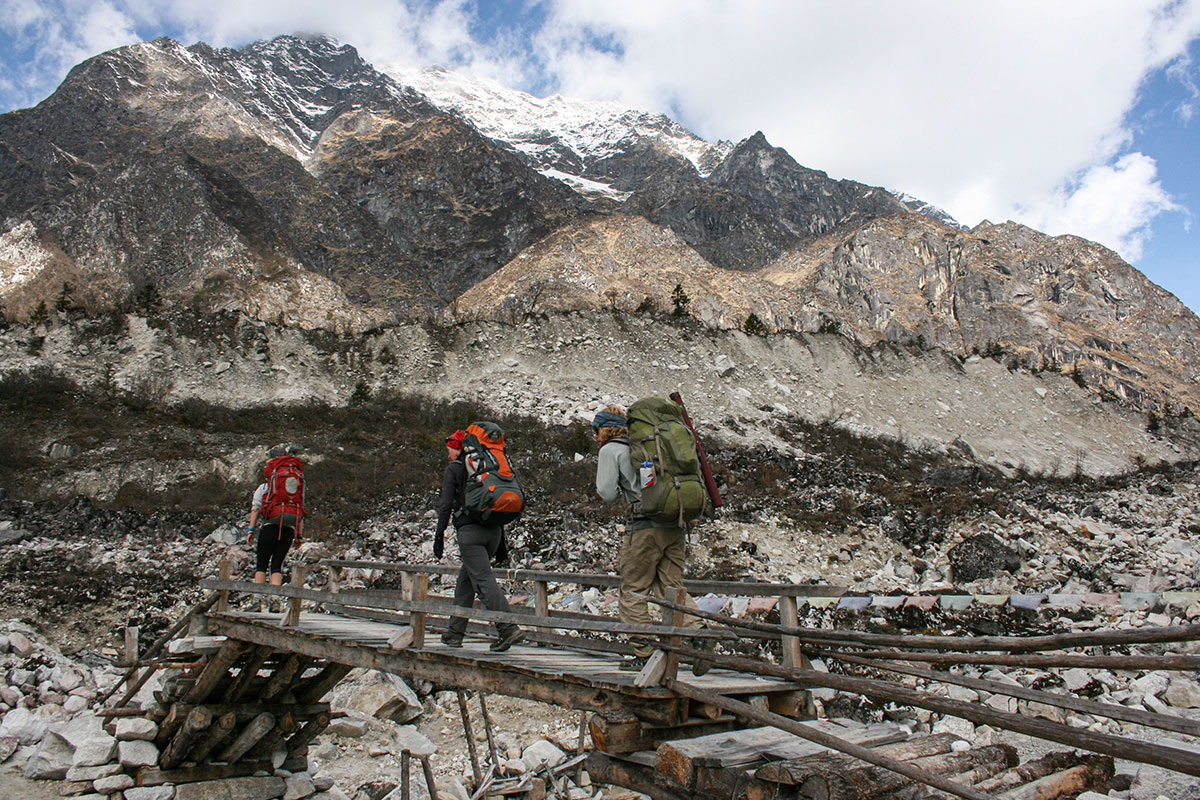
Tsum Valley Manaslu Circuit Trek
22 Days
Just as diverse as the ethnic population, so too the scenery varies from the lush, low elevation valleys growing rice and bananas, inhabited predominantly by the Hindu ethnic groups of Indo-Aryan origin, through rhododendron and bamboo forests, where you begin to encounter communities of Tibeto-Burmese origin who practice Hinduism, Buddhism or a mixture of both.
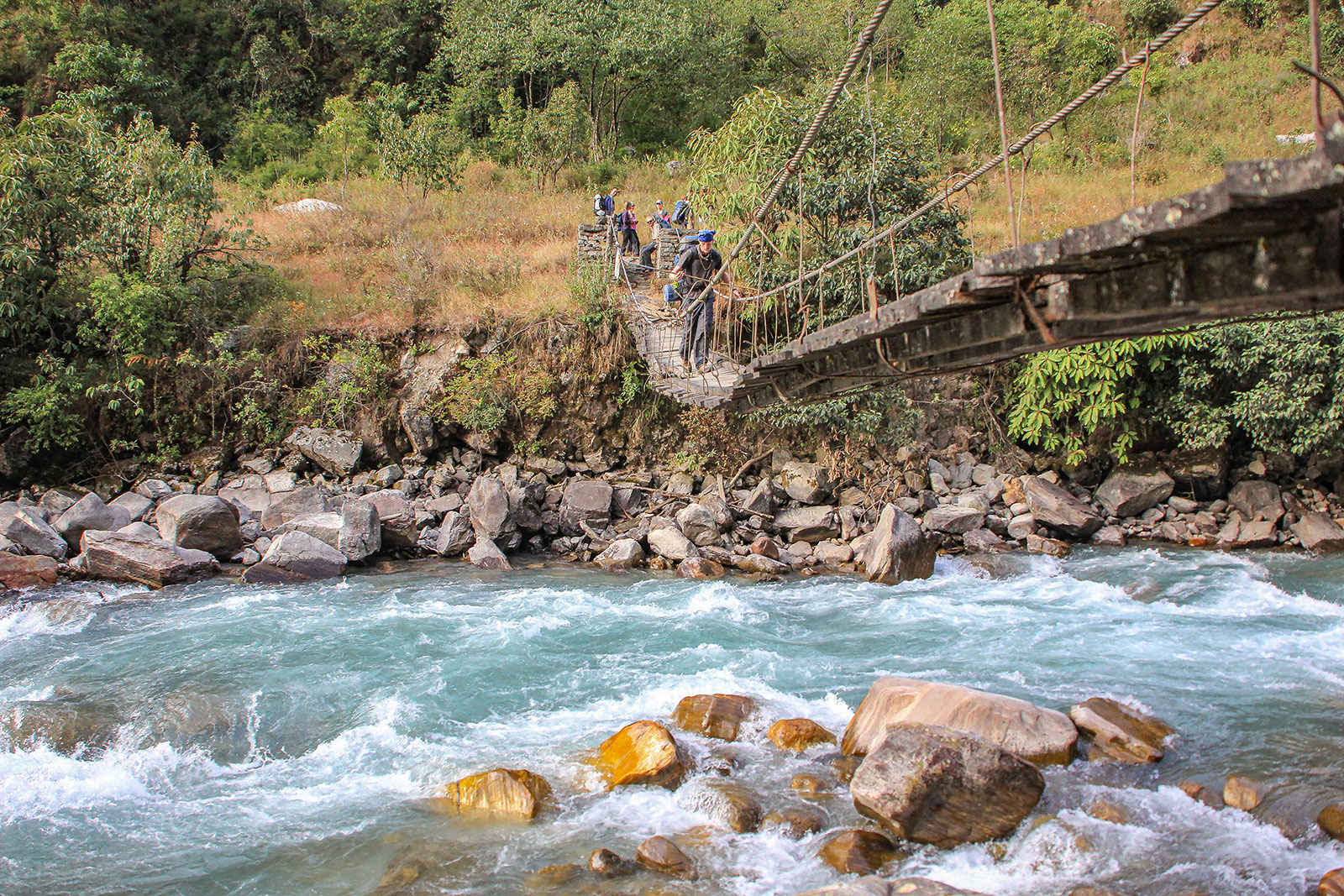
Kanchenjunga Base Camp Trek
26 Days
This circular trek takes you up through lush valleys full of seasonal flowers that receive the heaviest monsoon rains throughout the Himalayan range, north into spectacular high alpine landscapes full of woodlands and mountain streams.
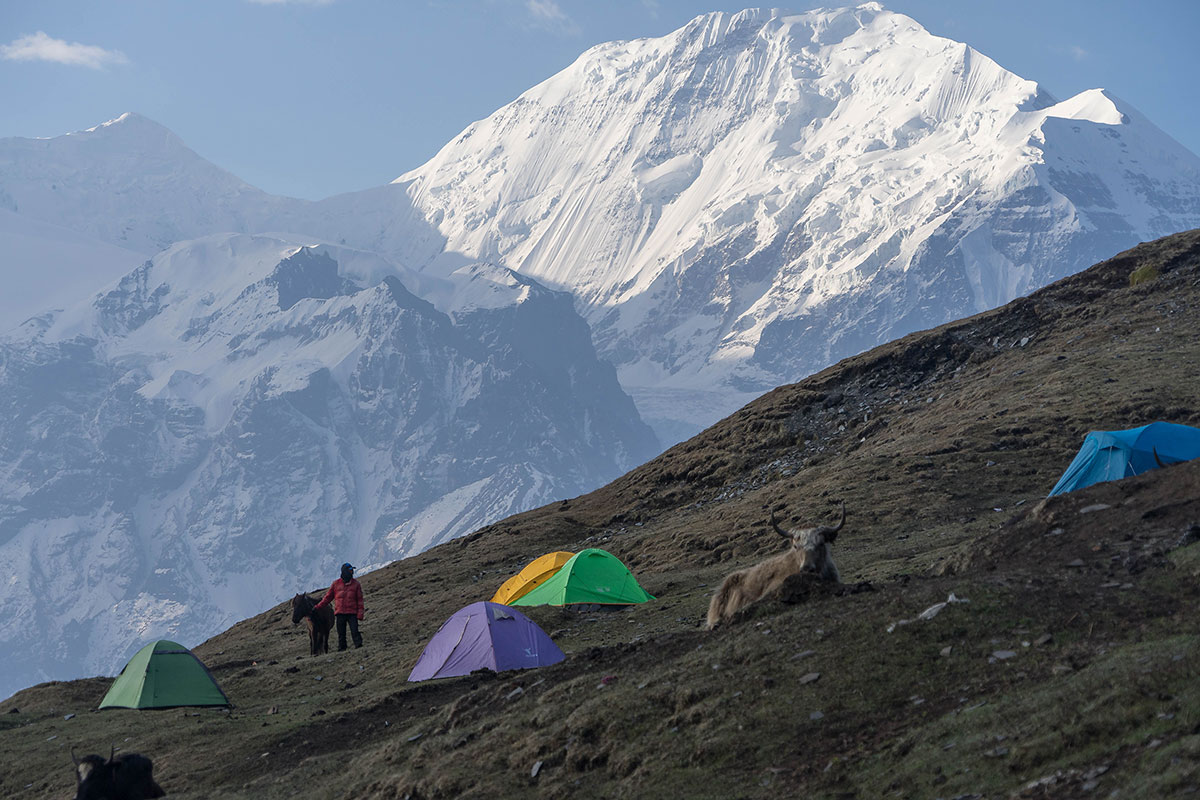
Nar Phu Annapurna Circuit Trek
17 Days
Trekking through remote villages steeped in Tibetan heritage and still following their ancient traditions of yak herding, harvesting wild herbs for medicinal purposes, and trading across the Tibetan border it will be like stepping back in time.

TSUM VALLEY MANASLU CIRCUIT TREK
22 Days
Just as diverse as the ethnic population, so too the scenery varies from the lush, low elevation valleys growing rice and bananas, inhabited predominantly by the Hindu ethnic groups of Indo-Aryan origin, through rhododendron and bamboo forests, where you begin to encounter communities of Tibeto-Burmese origin who practice Hinduism, Buddhism or a mixture of both.

KANCHENJUNGA BASE CAMP TREK
26 Days
This circular trek takes you up through lush valleys full of seasonal flowers that receive the heaviest monsoon rains throughout the Himalayan range, north into spectacular high alpine landscapes full of woodlands and mountain streams.

NAR PHU ANNAPURNA CIRCUIT TREK
17 Days
Trekking through remote villages steeped in Tibetan heritage and still following their ancient traditions of yak herding, harvesting wild herbs for medicinal purposes, and trading across the Tibetan border it will be like stepping back in time.
CONTACT US
Let us help you plan the trip of your dreams
Address
GPO Box: 8974 CPC 437
Kathmandu, Nepal.
Nepal Govt. Registration
11881/424 1134/066
Phone
Our Team
Diaries
Featured Trips
Bespoke For You
CONTACT US
Let us help you plan the trip of your dreams
Address
GPO Box: 8974 CPC 437
Kathmandu, Nepal.
Nepal Govt. Registration
11881/424 1134/066
info@himalayanquests.com
Phone
+977 9849 141067

